Got to love the sound of a small Continental engine at idle in a vintage aircraft…
Author: Russell
Montrose 2023
End of August – time for the Montrose Air Station Heritage Centre’s annual open day and fly-in at the “pop-up” airfield. I missed the Saturday due to work, but Sunday looked OK, even if the weather forecast wasn’t perfect. The Cub was dragged out and fuelled up:
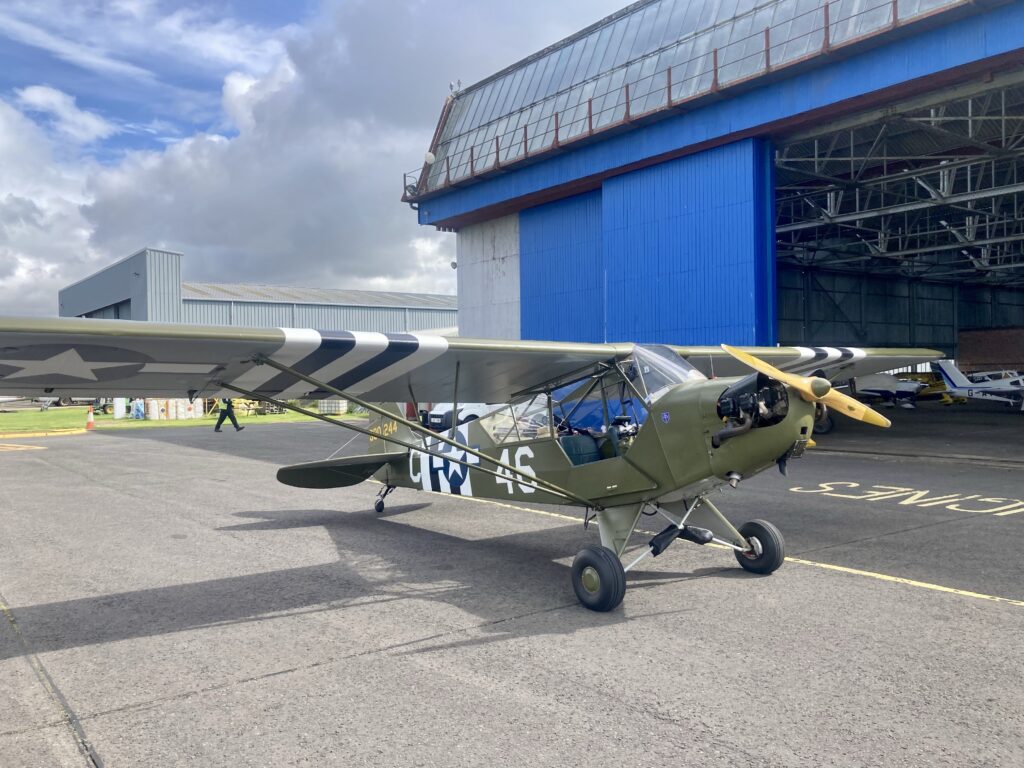
And off we went. There were a few showers around, but they were widely spaced and easy to avoid, like this one at Forfar:
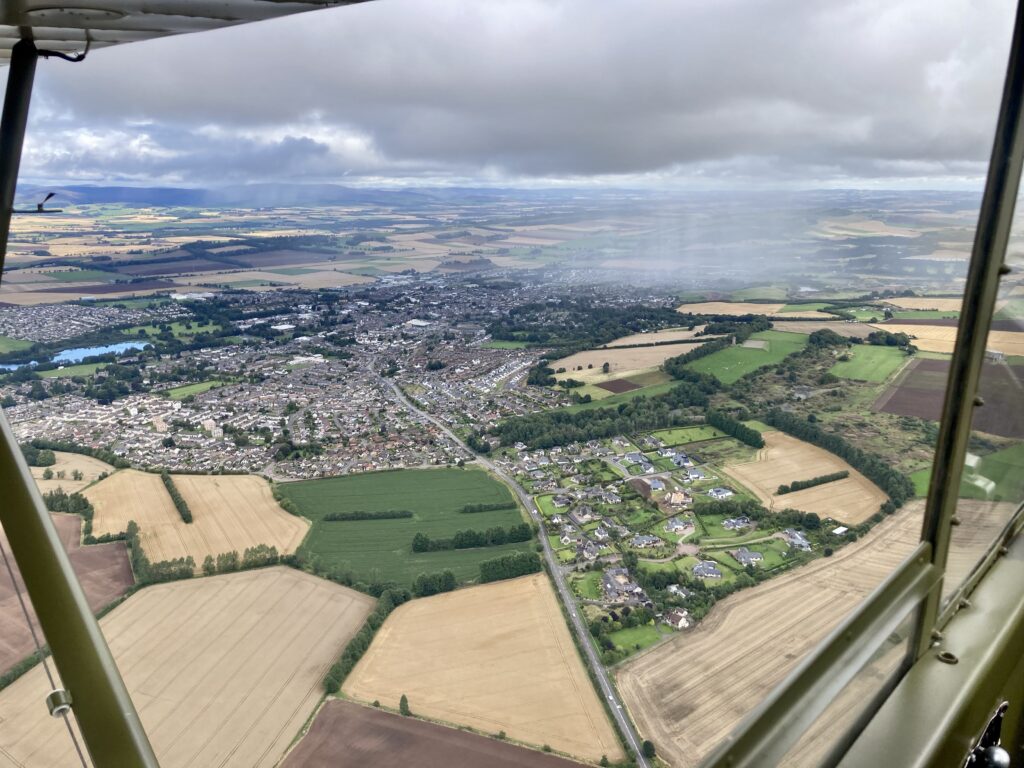
Arrival at Montrose was via the overhead, to get the lie of the land, followed by a low approach and go-around to check the runway, and finally touching down on the slightly bumpy pitches…
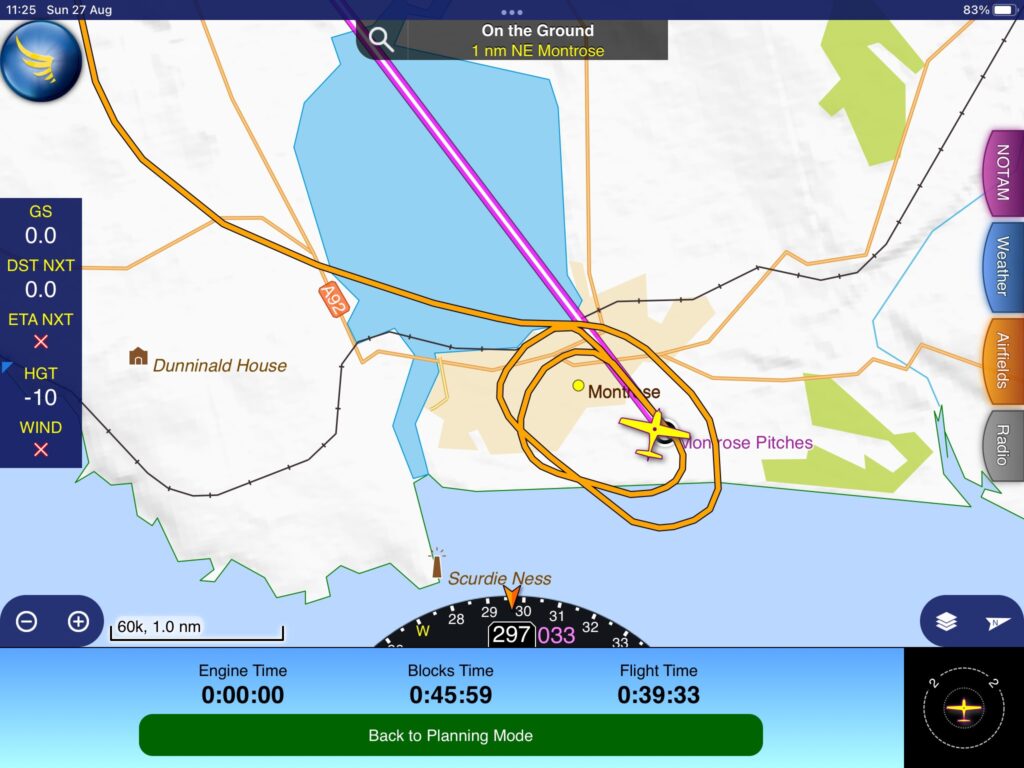
It wasn’t as busy as 2022, maybe the weather put some people off; I did have to shelter in one of the marquees for ten minutes as a quick shower went through, but the grey skies were mostly threatening rather than delivering…
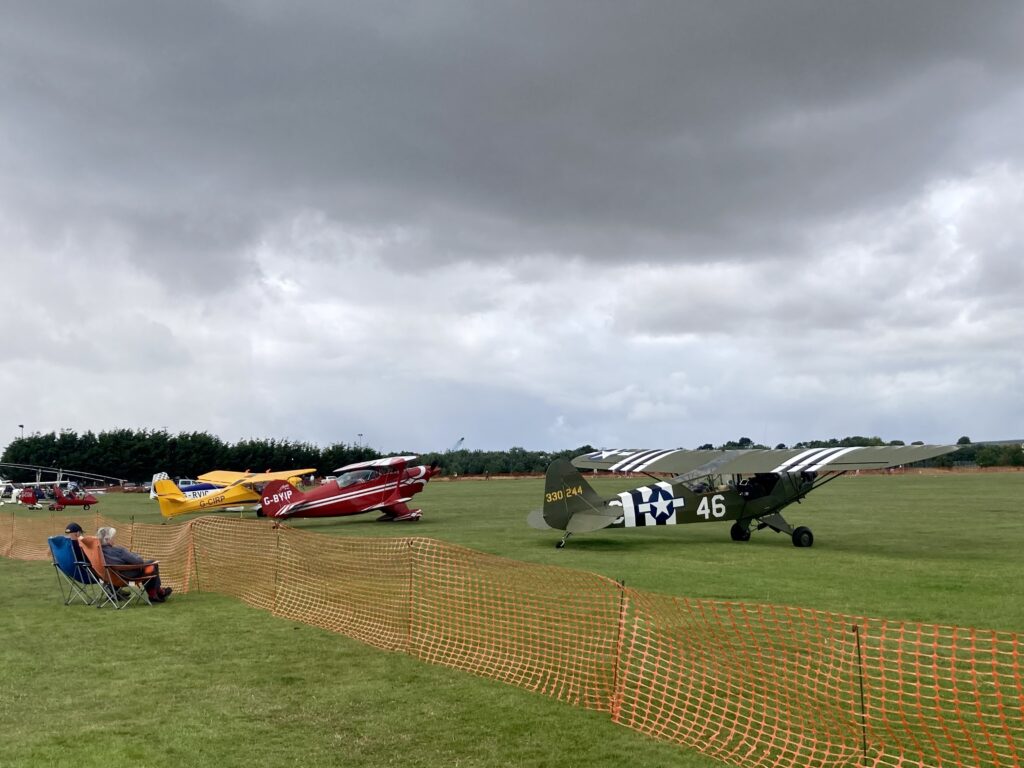
Grant from Aberdeen was there again with his collection of military vehicles, including these Jeeps:
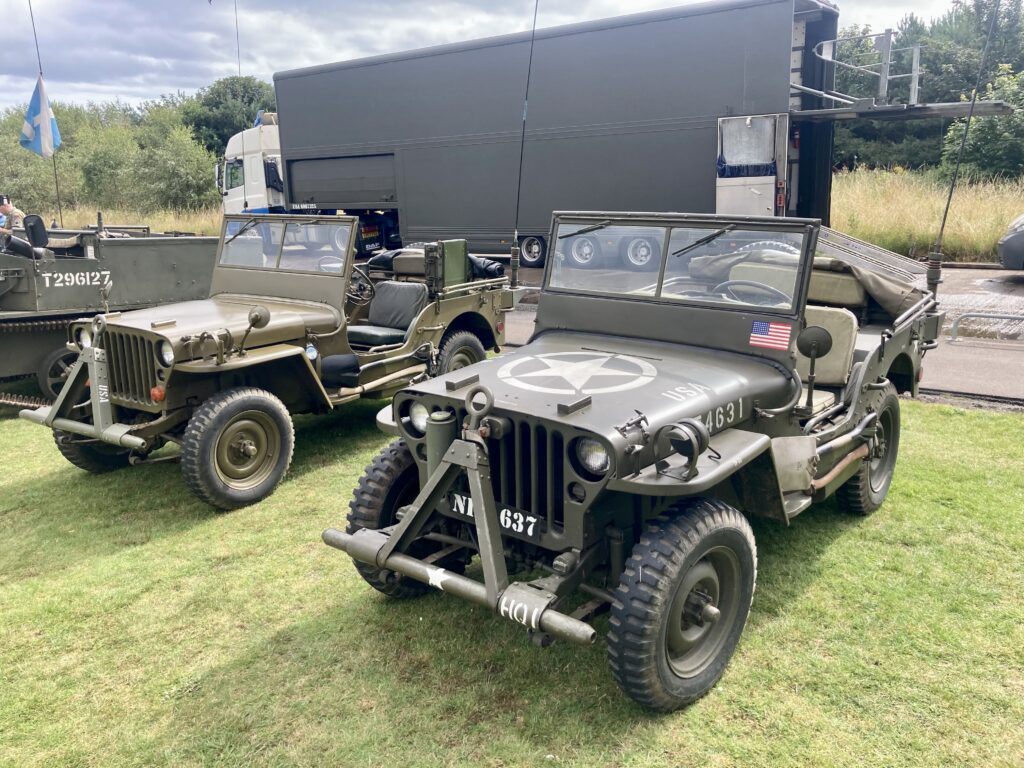
As the day wore on the weather slowly started to deteriorate and I decided to get going back to base. Here’s a radar screen shot of the route just before departure. Some heavy rain returns on the picture but no cloud forecast at lower levels so we could pick our way through…

Even the heavy rain areas were not too bad after all. I decided to stay low and enjoy the views from 500 feet and 65 knots. One advantage of such a slow speed is that you get a lot of time to study features on the ground as you gently trundle past:
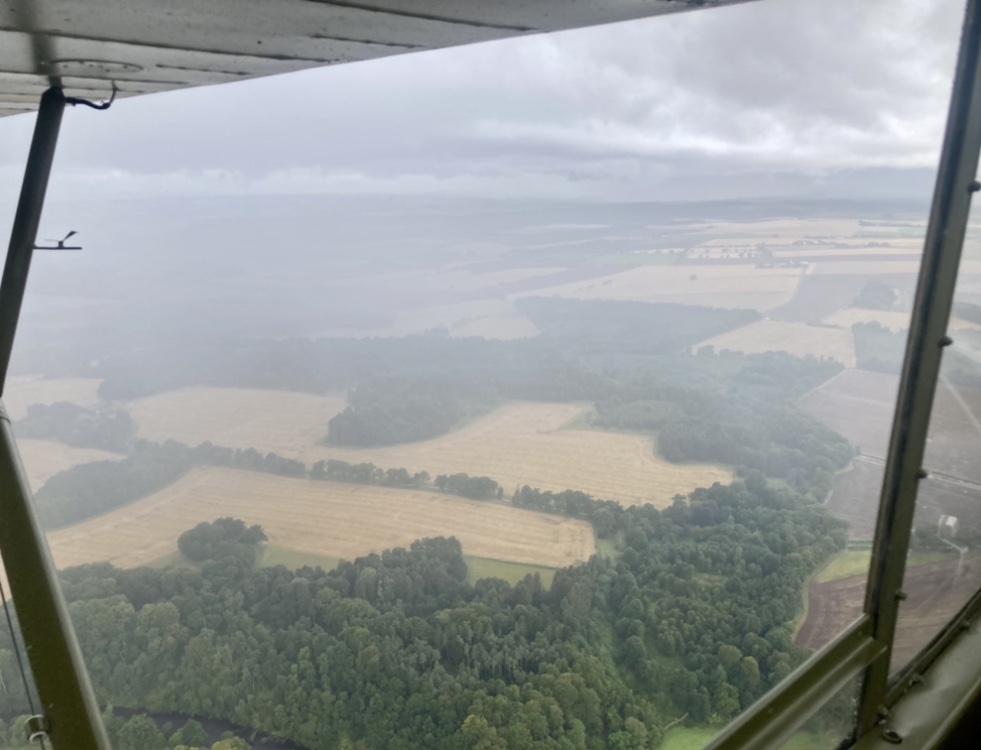
With 10 miles to run to Perth we were out of the rain zone and in lovely clear weather, more than adequate for the task at hand. Our favourite river confluence basking in sunshine…
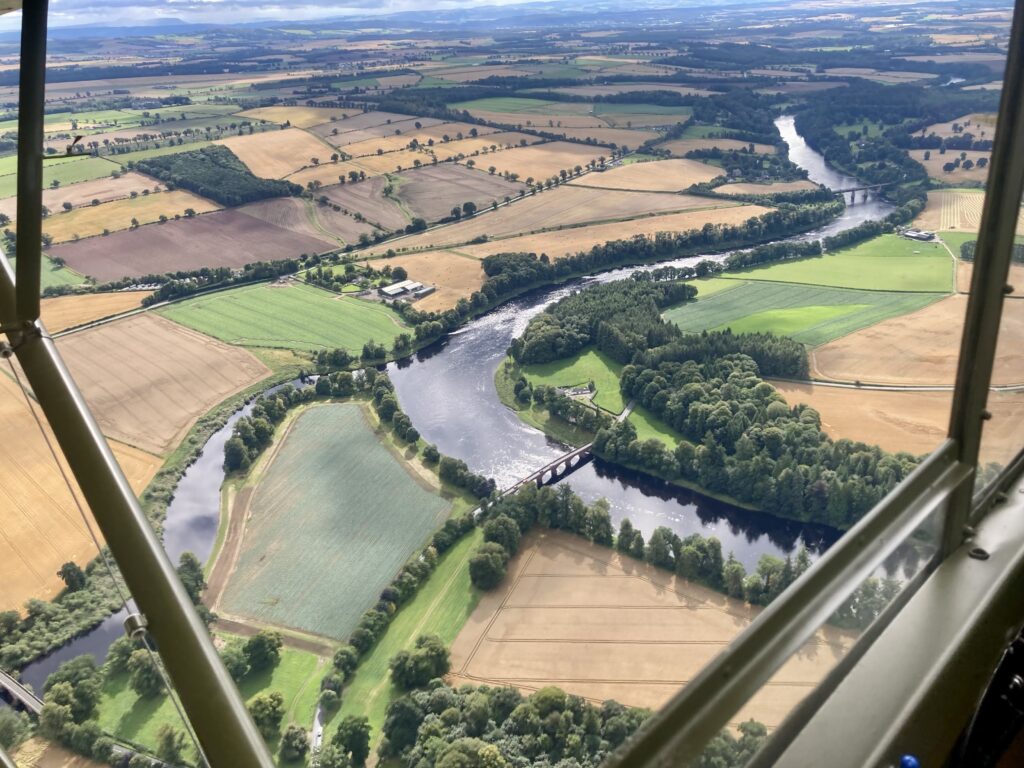
It’s a great day out – we’ll be going back next year – got to keep the fans happy., and the bumpy grass runway is good fun…
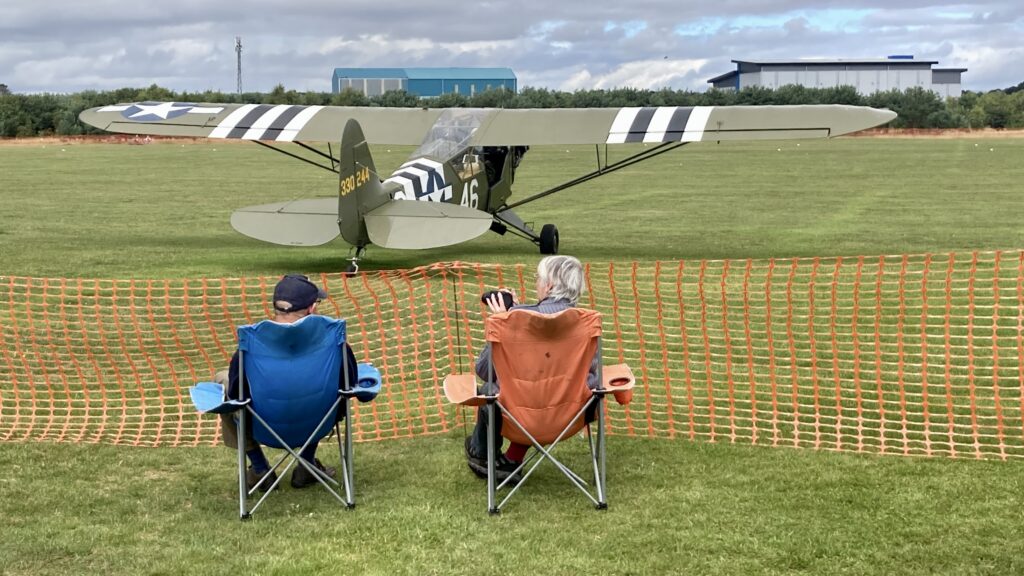
Next year I’ll be retired so will have both days free – a chance to do some “Cub Camping” and spend the night under the wing? Maybe…
Fishburn and Cumbernauld
A couple of trips over a couple of days in the good weather. First up, the RV6, for a flight down the east coast to Fishburn. Last time we were there was in the Sting, in 2017.
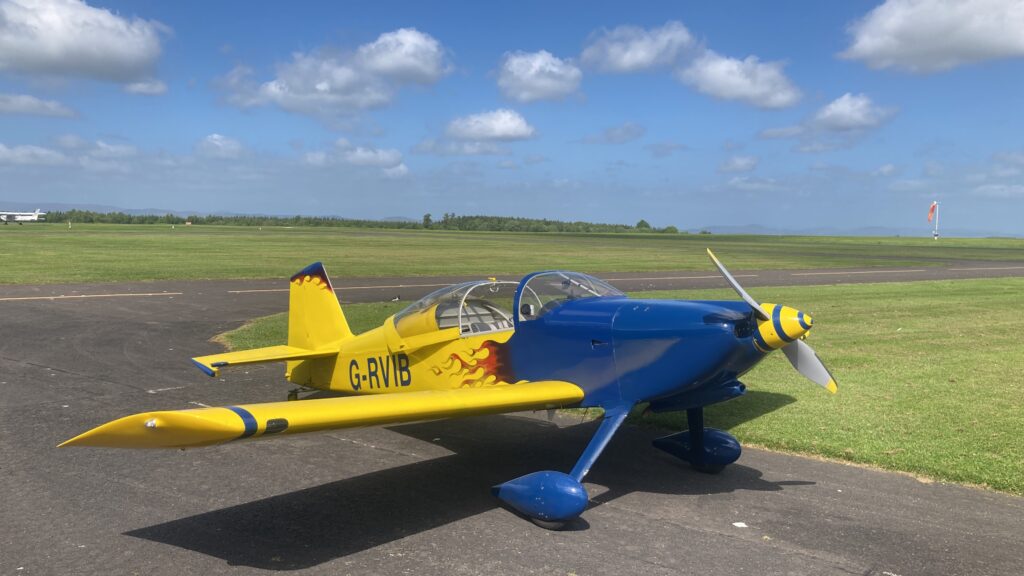
You can see from the airfield diagram below that there is a bit of a slope on the grass runway, which is nice and long. Note the parallel grass taxiway, more on that later…
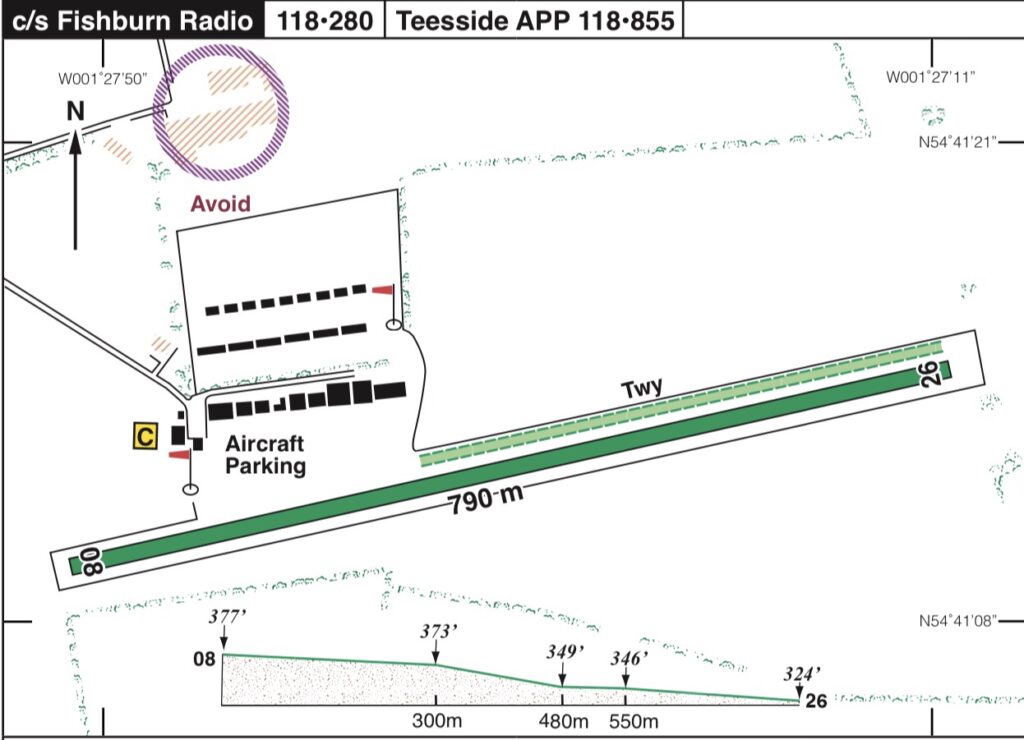
The standard “Ho Chi Minh” trail down the east coast passes Holy Island:
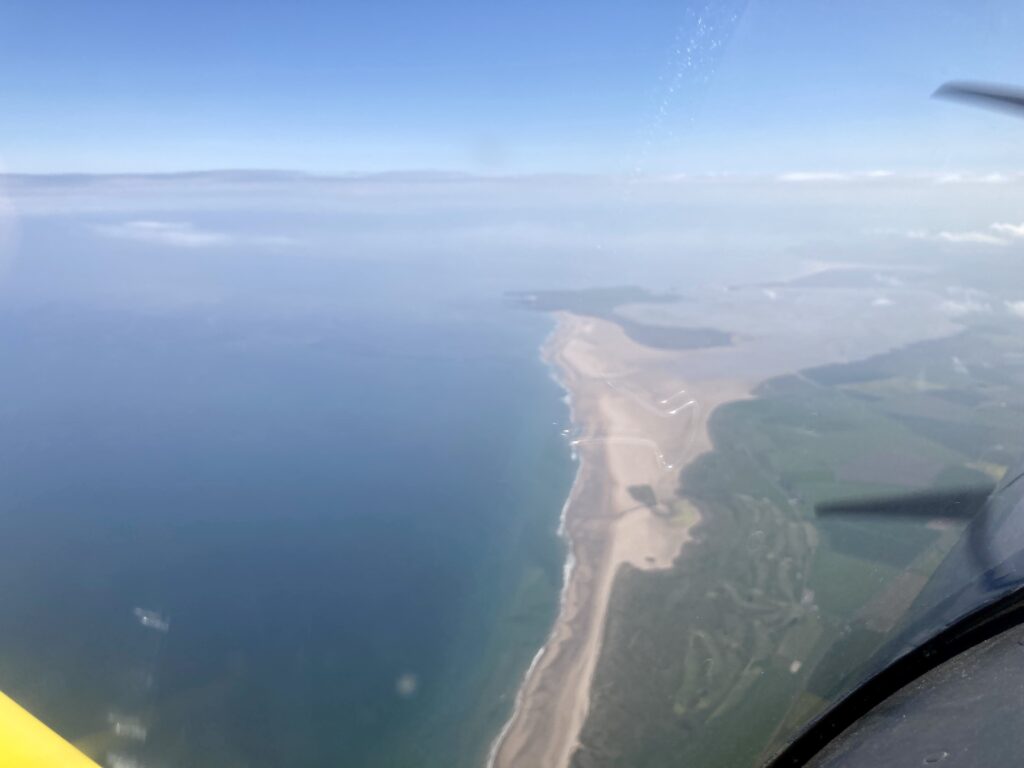
Quite a lot of cloud buildup over The Cheviot…
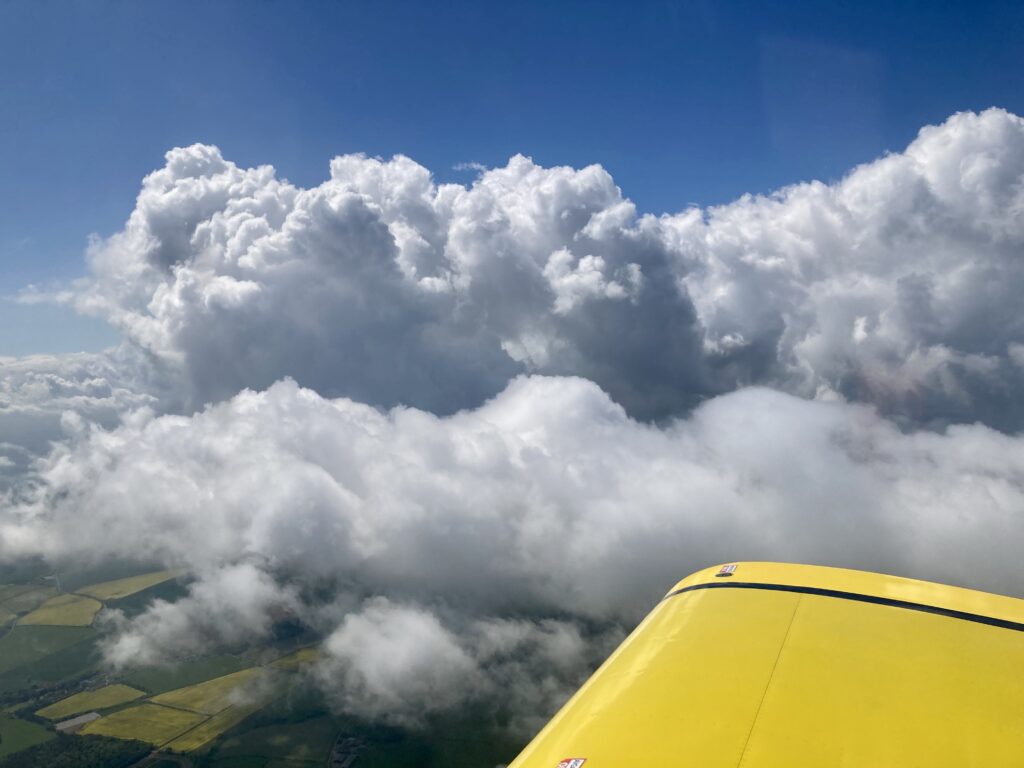
Passing Tynemouth again, and the wreck of the Zephyros. Again. The cloud had become more of a high overcast, and this continued all the way to Fishburn.
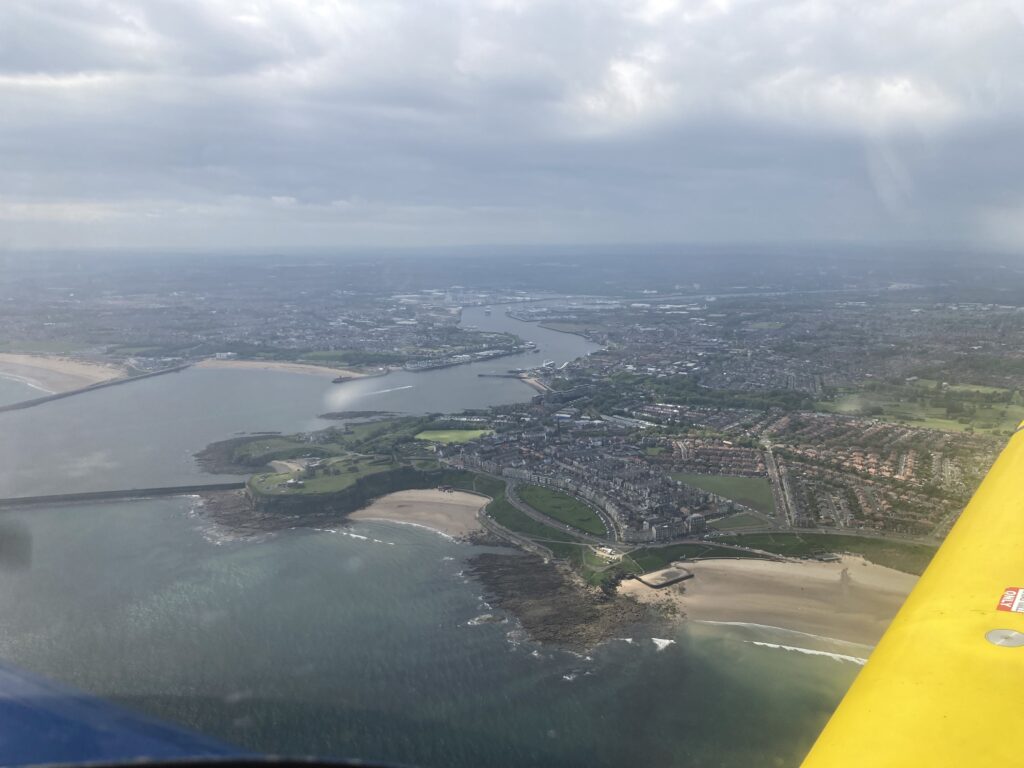
Parked at Fishburn. The trouble with grass airfields is that you have to mow them. When I arrived the taxiway had been mown, but not the runway. That fresh mown strip looked so inviting that I initially lined up on it, but as we got closer it became obvious that the runway was the other bit.
Fishburn is a busy little place, with lots of hangarage:
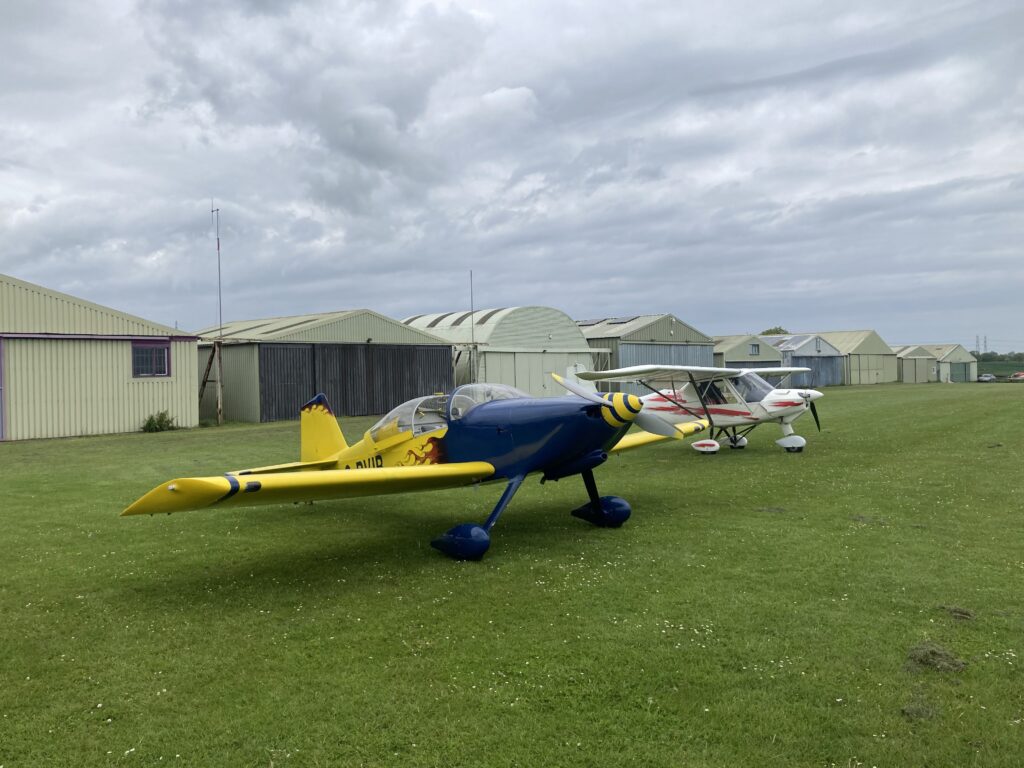
The cafe was about two-thirds full, and by subtly eavesdropping I could make out that not all the patrons were flyers. It’s a good recommendation when the locals patronise the place. I got the standard coffee and cake:
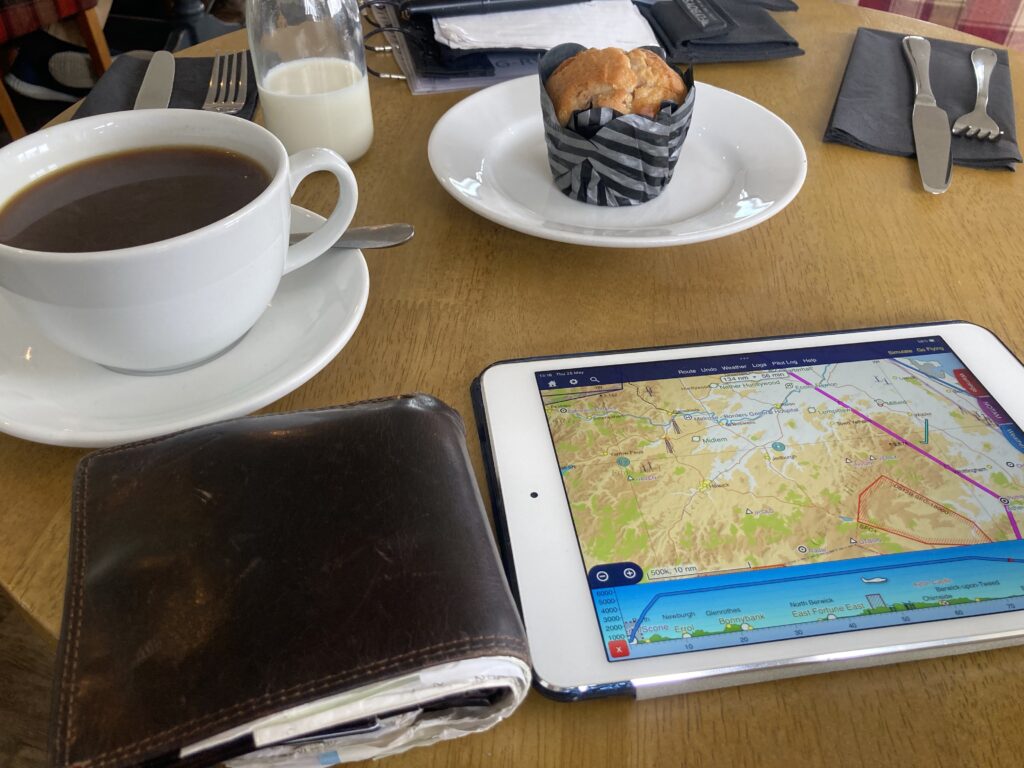
On departure the wind had swung round to be exactly across the runway. I would have liked to take off downhill for the extra acceleration but everybody was still using runway 26 so that’s what we did. Uphill with a crosswind, but the RV made swift work of the take off and soon we were skirting the Newcastle zone to the west and setting course north…
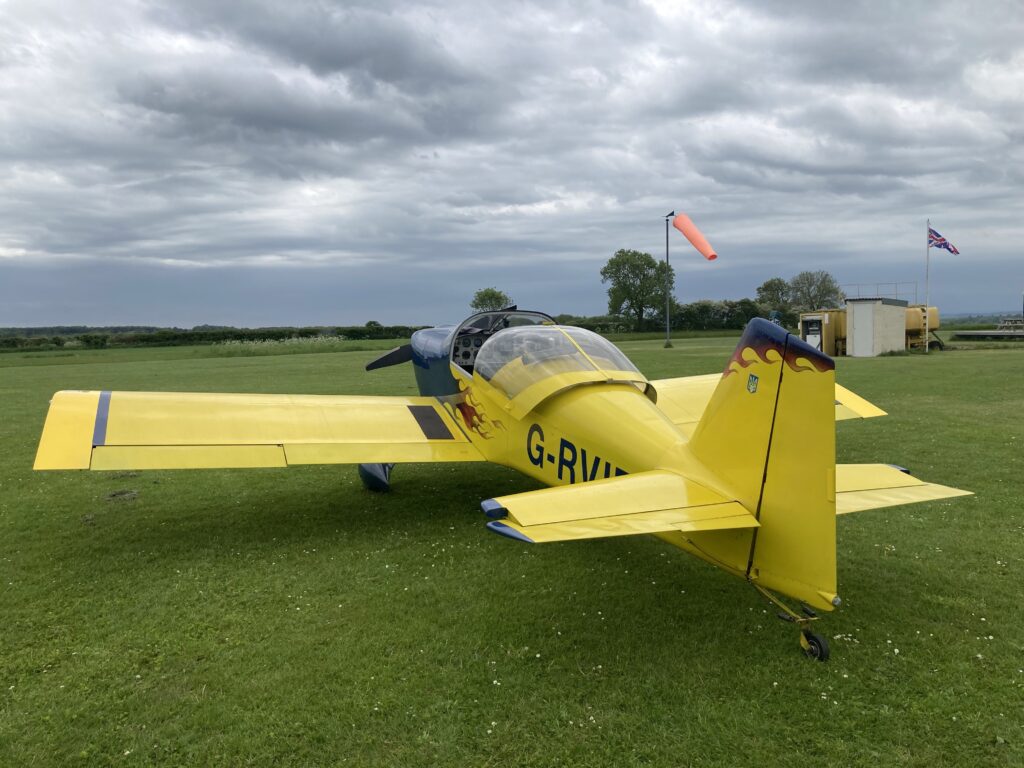
I found out later that just after I departed the Vulture Squadron from Sleap had arrived. Just missed them…Glen, Paul and Pete who were at the VPAC fly-in in various Cubs. Glen and Paul were in a borrowed Grumman and had a puncture. Luckily Pete is an engineer and they got it sorted. They stayed the night. For me, the weather was glorious for the trip north…
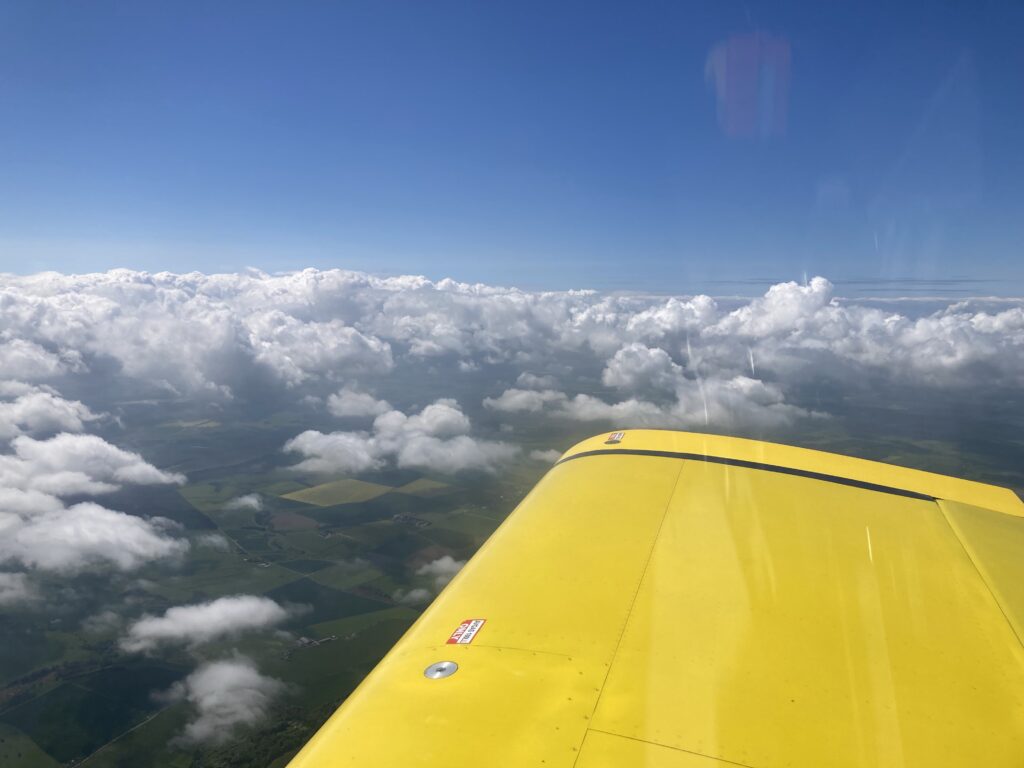
The route was further inland than the outbound leg, and was planned to fly over the farm strip at Lempitlaw in the Borders…
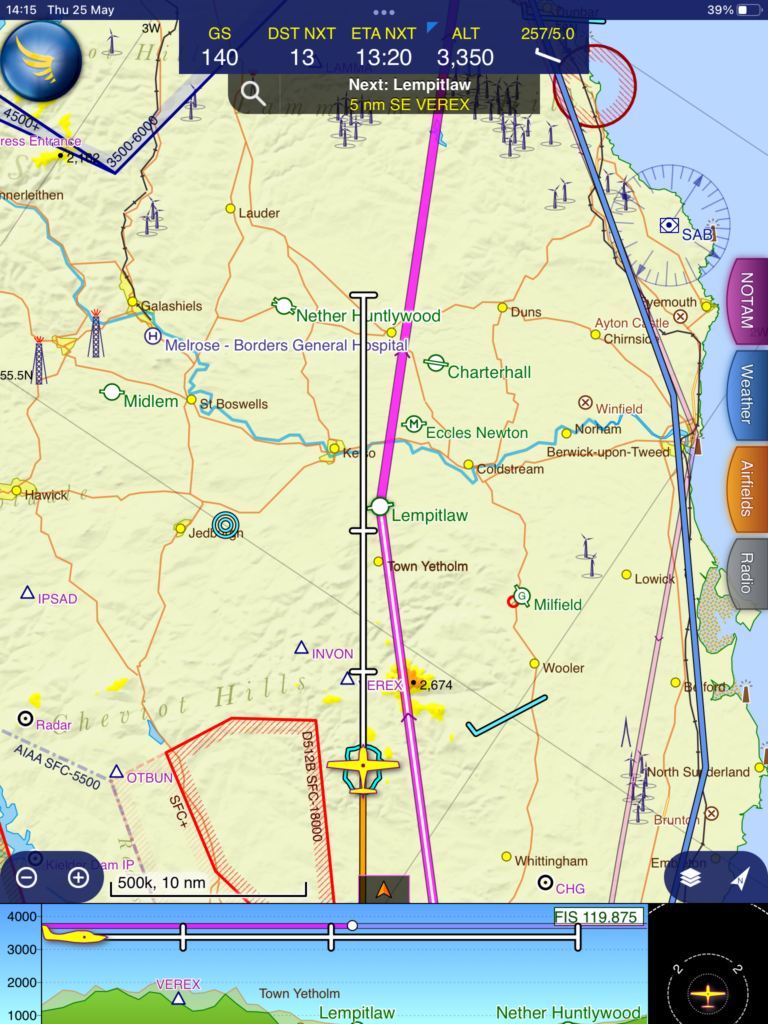
You can just make out Lempitlaw airstrip in the centre of the picture, just beyond the small pond:
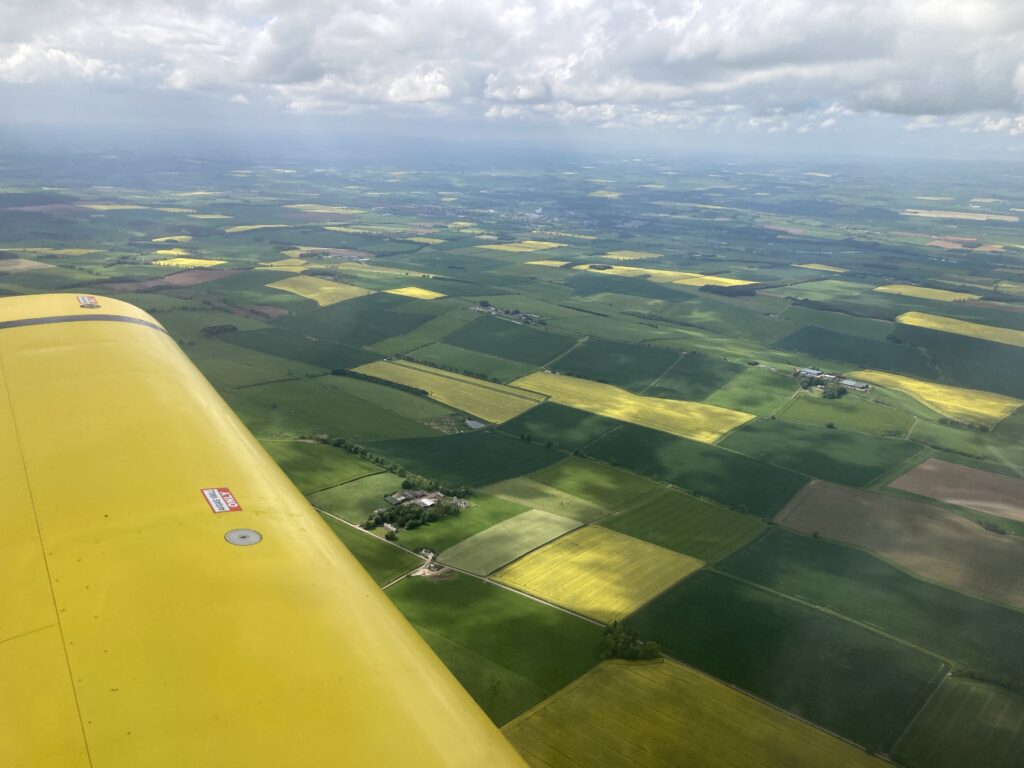
Next day the weather was still fine, so the Cub was dragged out…
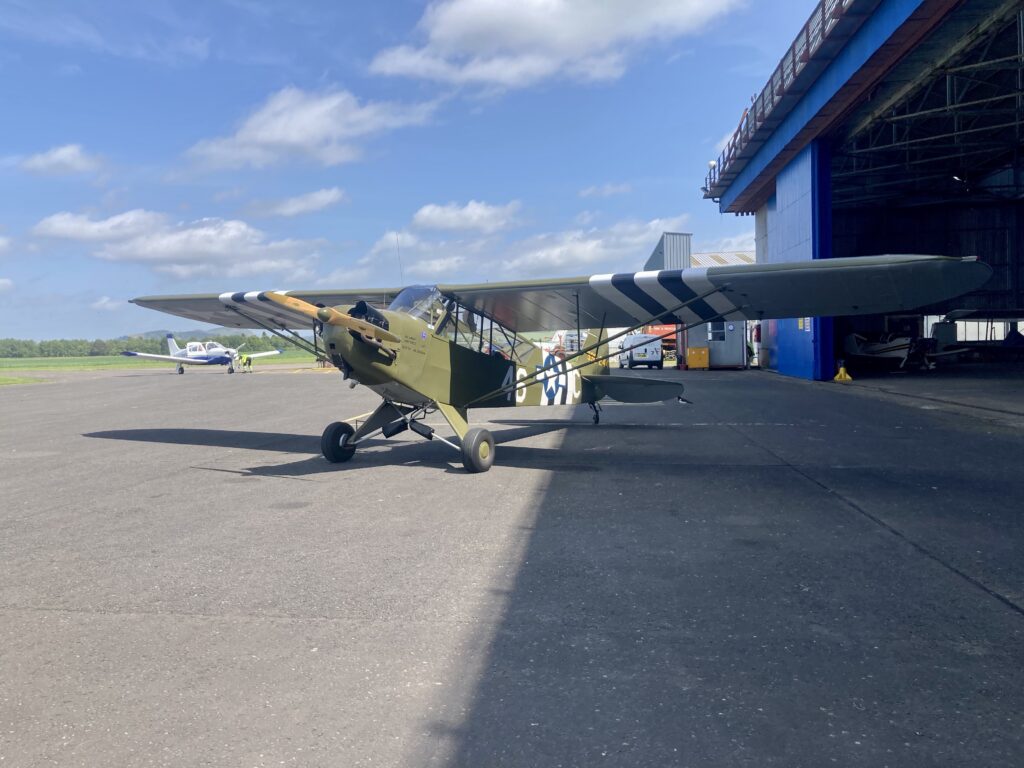
…and half an hour later we found ourselves in Cumbernauld:
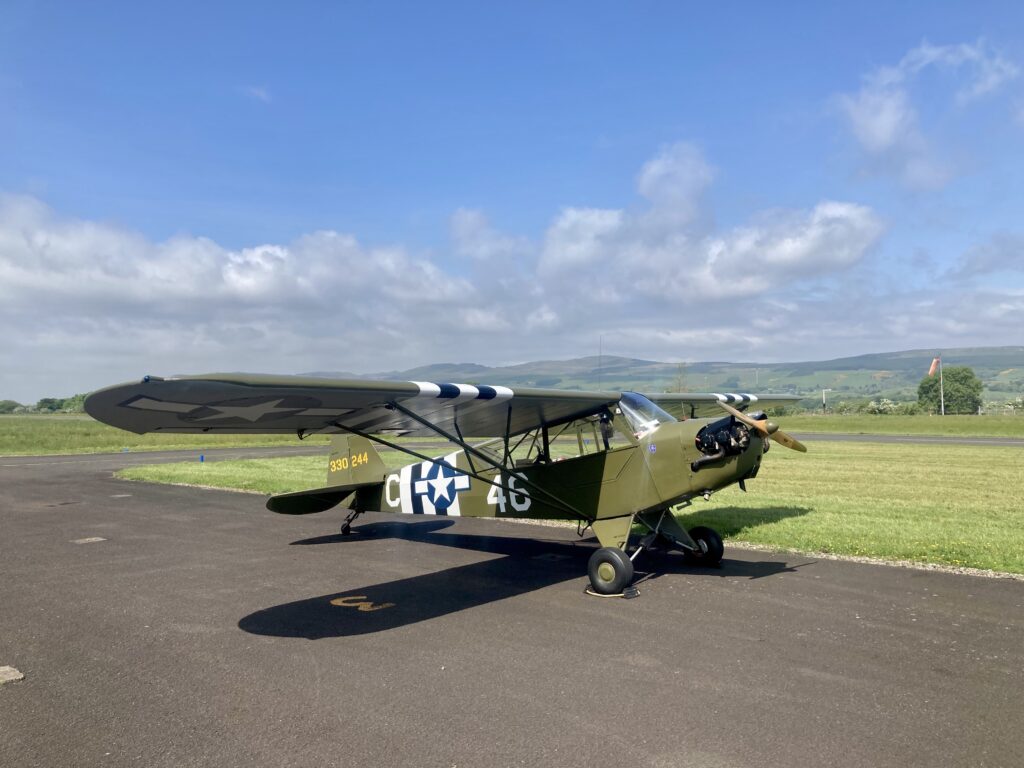
I had a meeting with Johnny of Phoenix Flight Training to sort out my two yearly instructor flight and licence sign-off, so walked along the edge of the apron to the Phoenix office. A German registered Pilatus PC-6 survey aircraft was just starting up. Noisy thing. I’ve jumped out of the same type of aircraft at Mmabatho in South Africa and Empuriabrava in Spain, they are great utility aircraft:
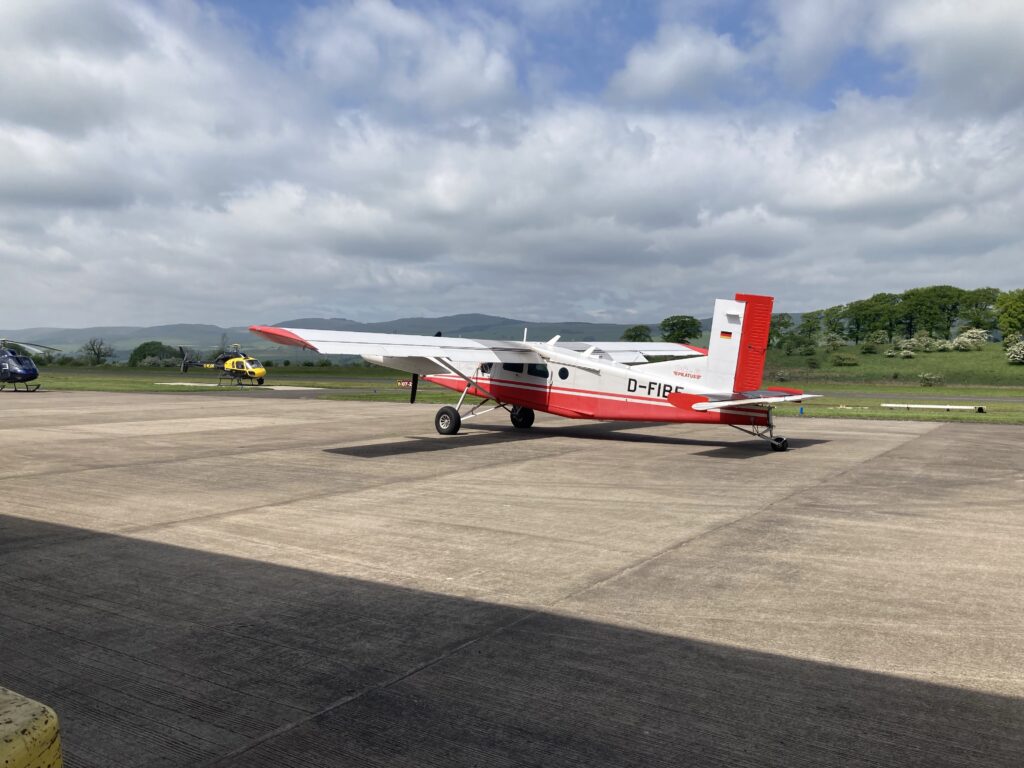
On start up, who should be preflighting the Tomahawk parked next to us? None other than Scott, who produced the Cub video last year. He was off on an hour-building trip with a friend, in between studying for ATPL exams and working as an air ambulance operations officer for Gama Aviation.
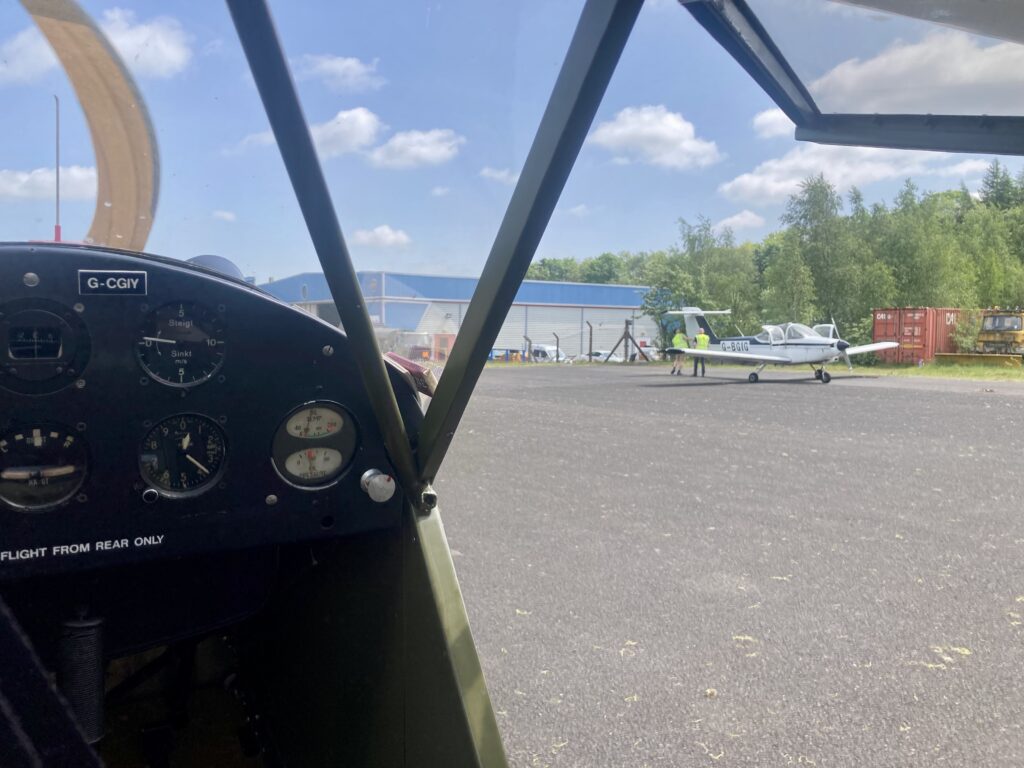
We were soon airborne and heading direct back to Perth. Here we are passing the Kincardine Bridges. Note the swinging centre section on the far bridge – this was to allow ships up the river to the old port at Alloa and also the ammunition storage facility in the loop of the river. The shipping no longer goes that far upstream, and the new bridge doesn’t have the ability to let ships through…
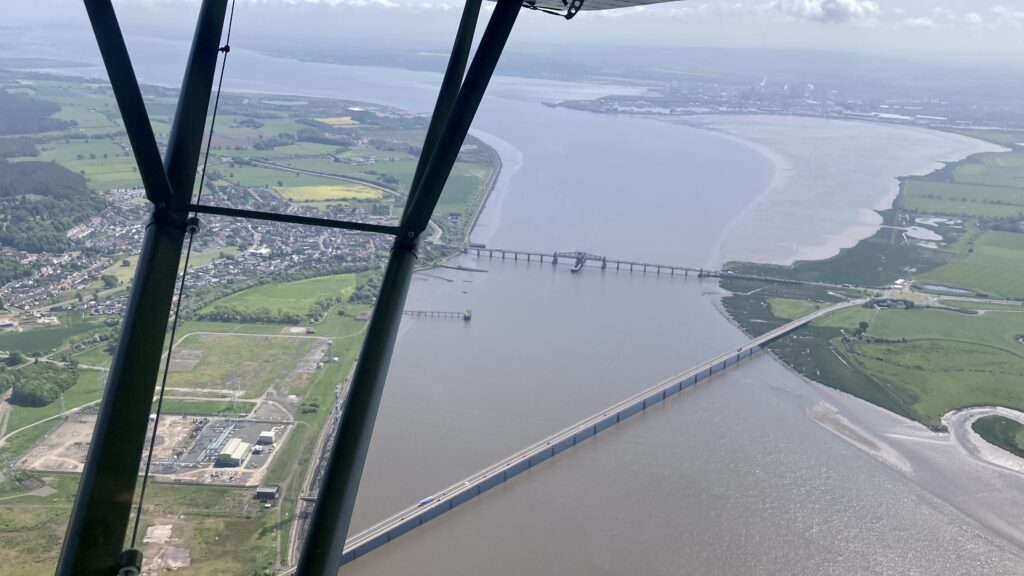
And finally back in the hangar, ready for all the adoring fans to visit…
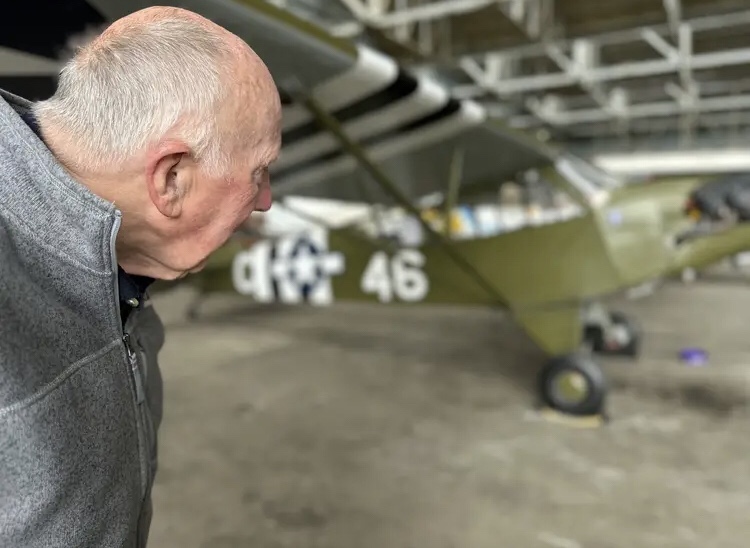
Long may the good weather last!
VPAC Wickenby
The plan was to take the Cub to the Vintage Piper Aircraft Club’s “Northern Meet” at Wickenby. Ironic that I would fly south for four hours to get to the “Northern” Meet!
I had been monitoring the forecasts for the week before…initially it looked like the whole thing would be a washout due to the weather, but as the days counted down it started looking promising – clear skies on the way down and a little bit greyer on the back.
Imagine my surprise when I checked the Newcastle weather on departure morning…no wind, visibility 500m in fog with broken clouds at 100ft about the airfield:

The weather at Perth looked nice, so the decision was made to prep the aircraft and check the weather in a bit – the cloud was probably just lifted fog which should dissipate as the day warmed up. Or so I hoped.
Packing the Cub was pretty straightforward – overnight kit on the front seat, spare oil in the boot and a lifejacket for the overwater bit…
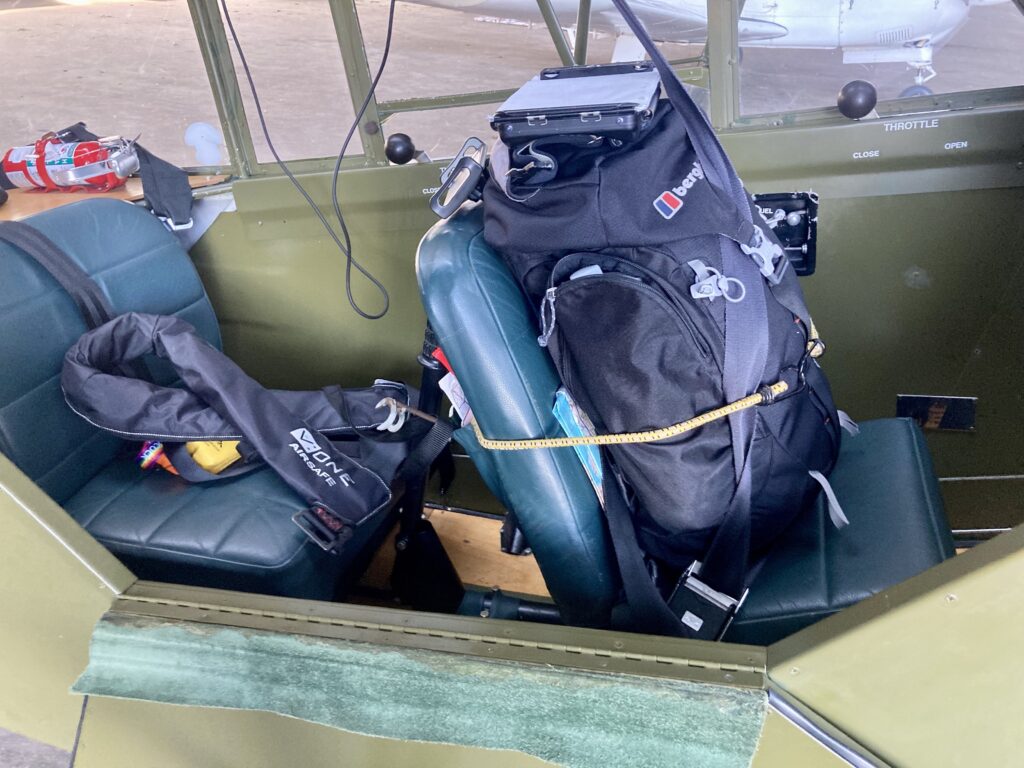
By the time I had pulled the aircraft out the weather at Newcastle had improved sufficiently to launch. In fact the weather all the way down was lovely. Here we are southbound over the Firth of Forth:
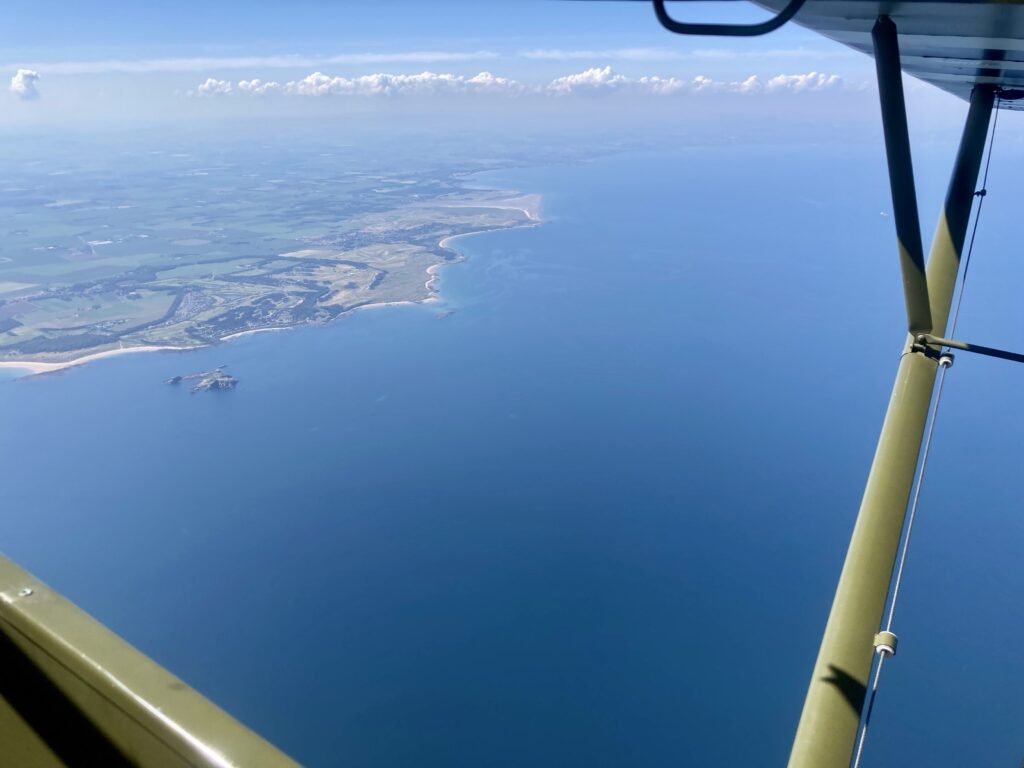
The planned route was Perth – Eshott – Gamston and then stay the night. Originally I wanted to camp at Eddsfield but Edd rang back to say there was no fuel. Camping was ditched in favour of a hotel. Such hardship!
There was a bit of a headwind on the way to Eshott but after about an hour and a half the combine harvester graveyard near Alnwick hove into view:
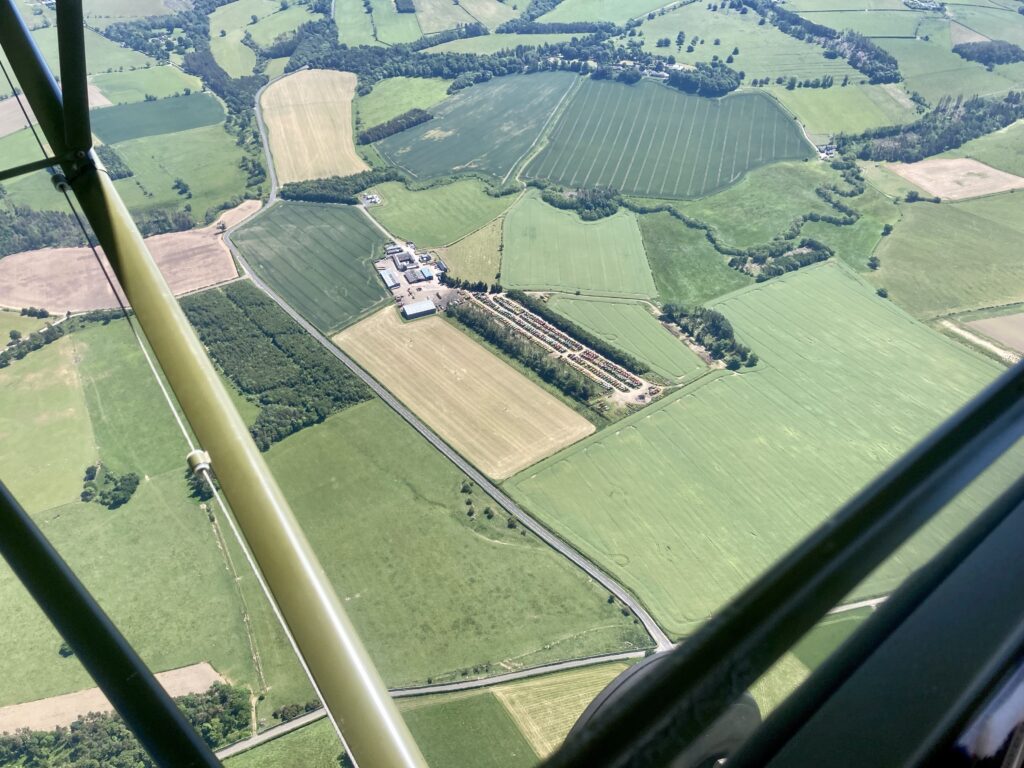
Shortly thereafter we were on the ground at Eshott where the refuel was quick and efficient:
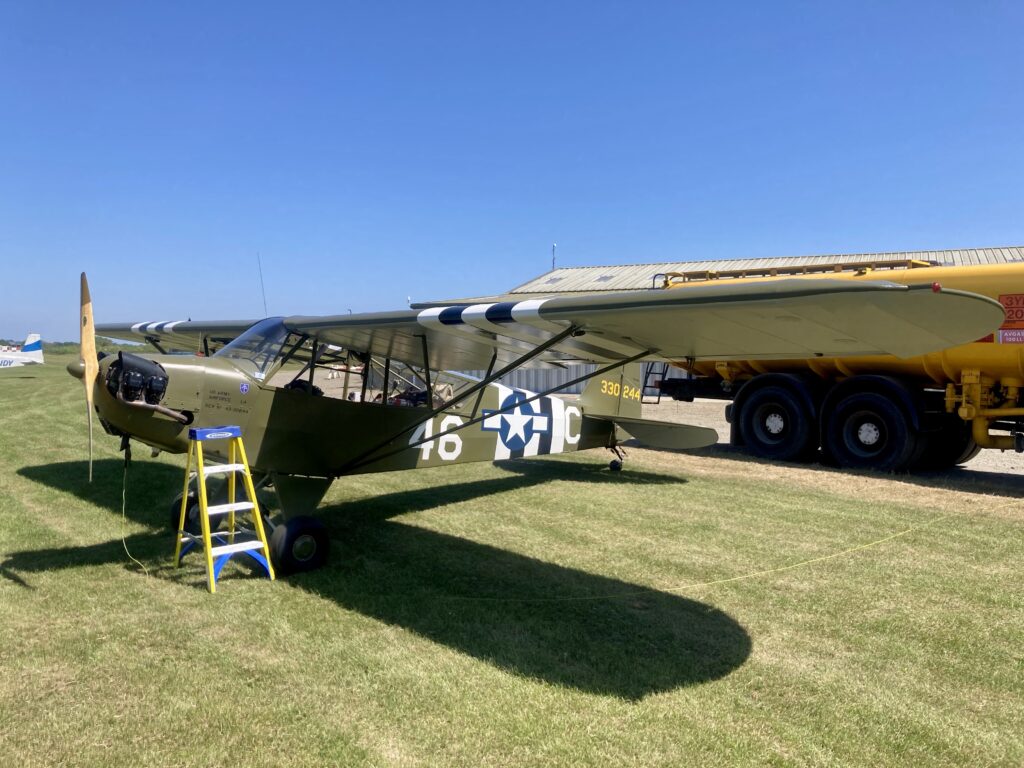
Off again down the coast, passing Ashington, with its rows and rows of coal miners’ houses:
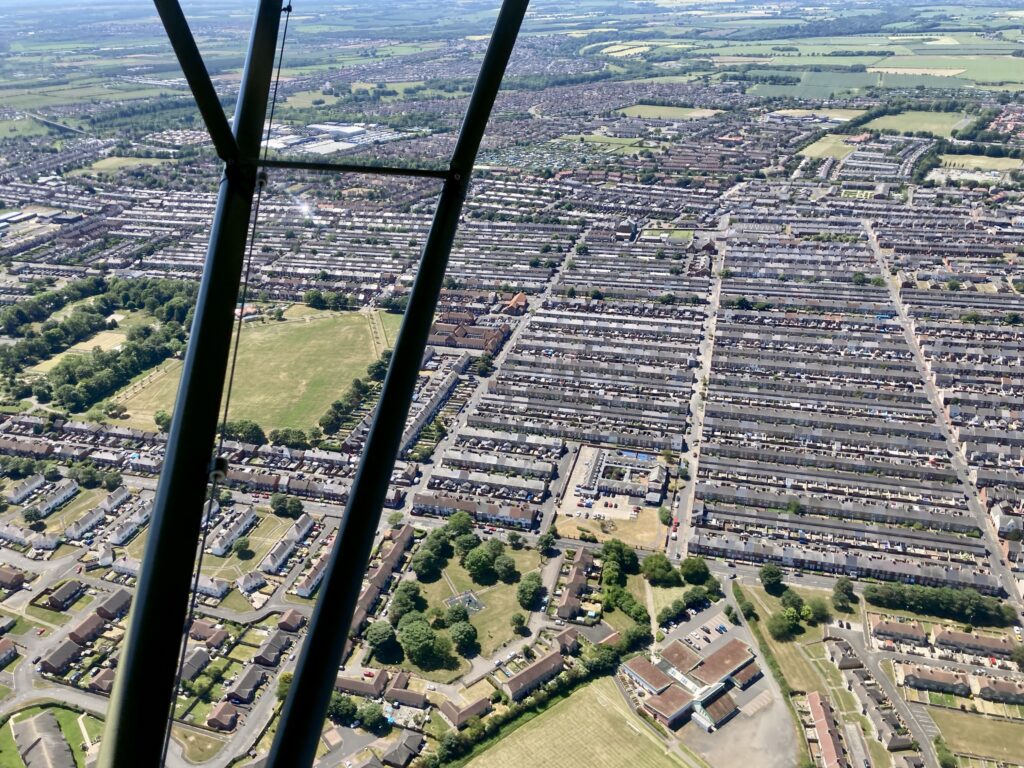
The weather was by now glorious, with very little cloud way off in the distance, still a little headwind and very warm. It was lovely to trundle along the coast at 500ft waving to people on the beaches out of the Cub’s open door and window. Here we are passing the wind turbine at Blyth, which is a Visual Reference Point (VRP) for Newcastle airport:
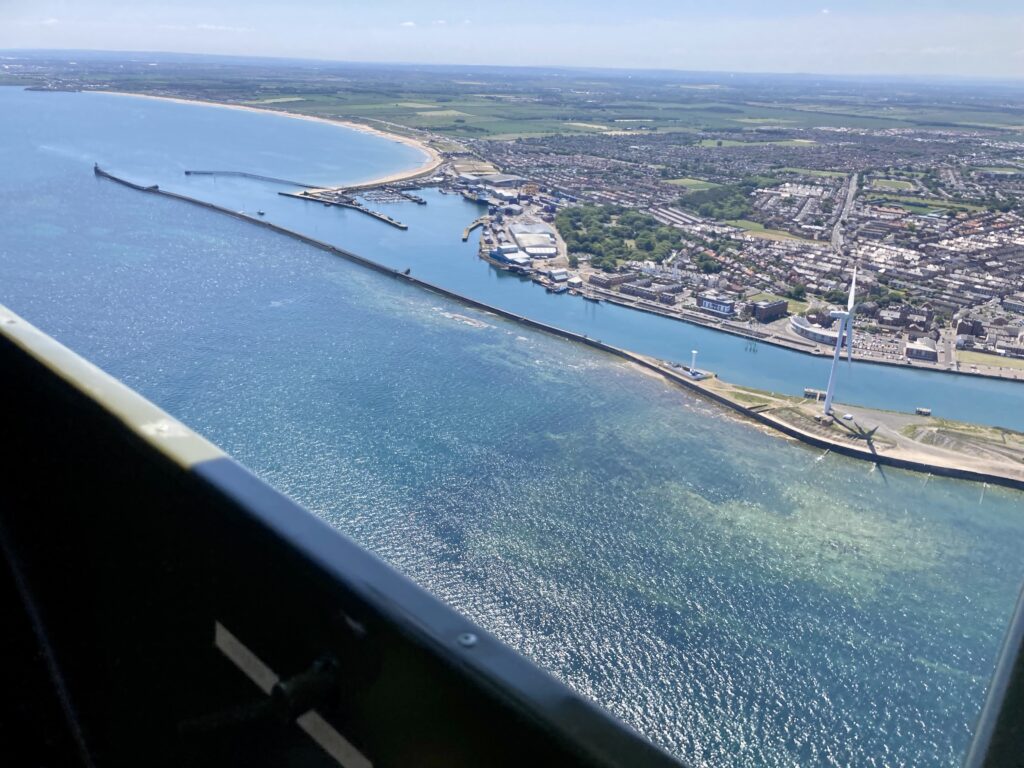
To stay out of the Newcastle control zone you have to fly offshore a little bit. St Mary’s Lighthouse:
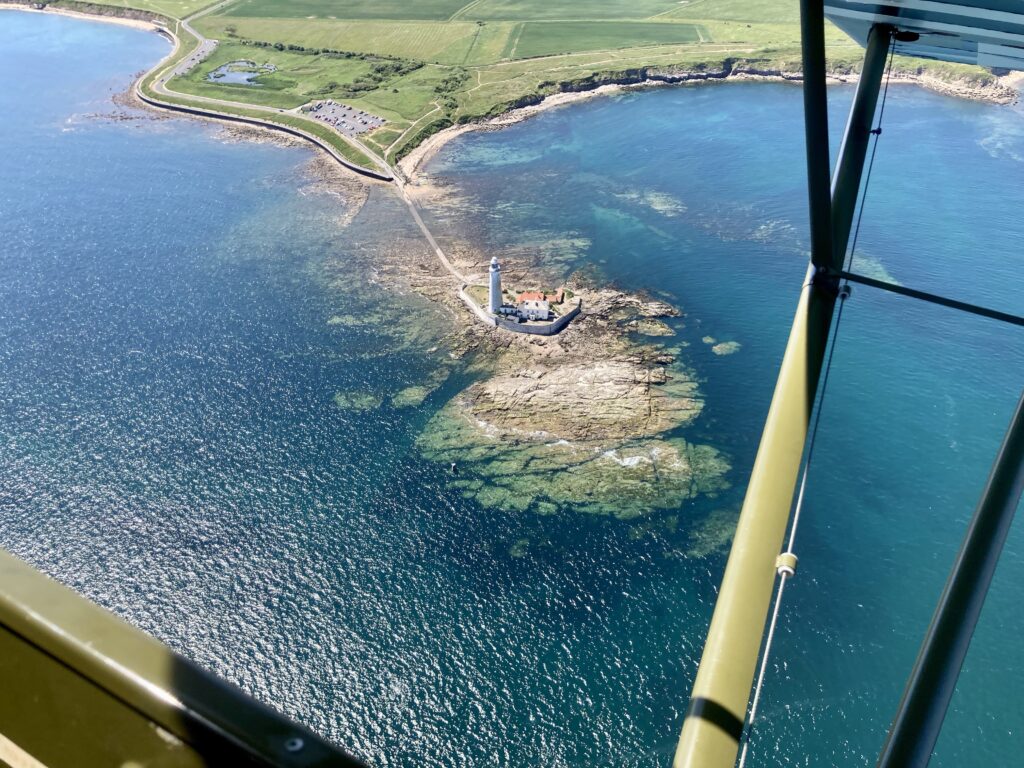
Tynemouth and South Shields, having just passed our old friend the wreck of the Zephyros http://www.sigurdmartin.se/2016/10/07/the-wreck-of-the-zephyros/:
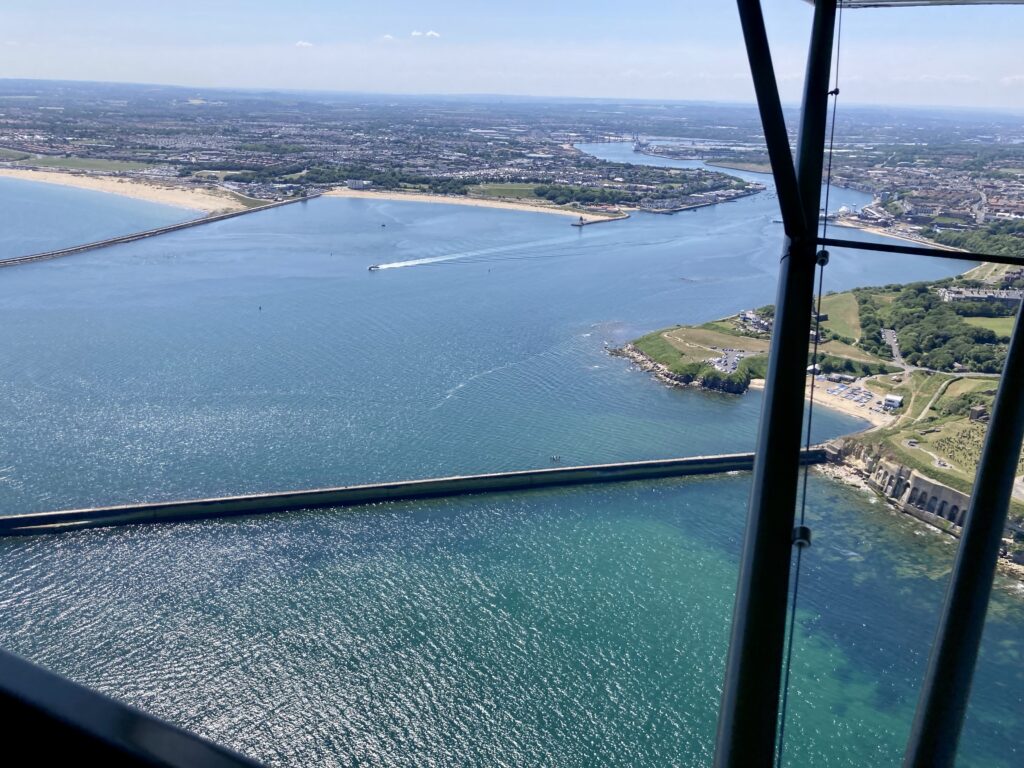
Looking out the other side, windfarm in Tees Bay…
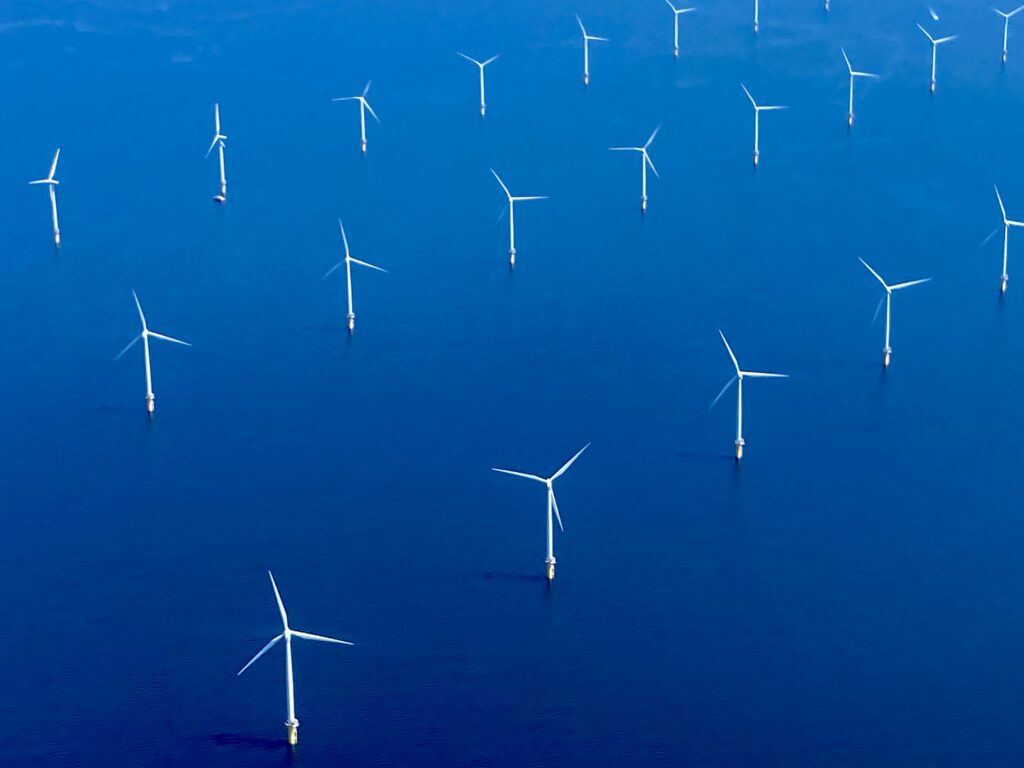
The North York Moors are to the south of Teeside, and as we came over the top, way way off in the distance on the horizon I could make out the chimney and cooling towers at Drax power station. I swear that sucker stayed in the front window for an hour until we finally got to it. With the headwind we were doing about 50 knots and I first saw it 50 miles away so yes, an hour.
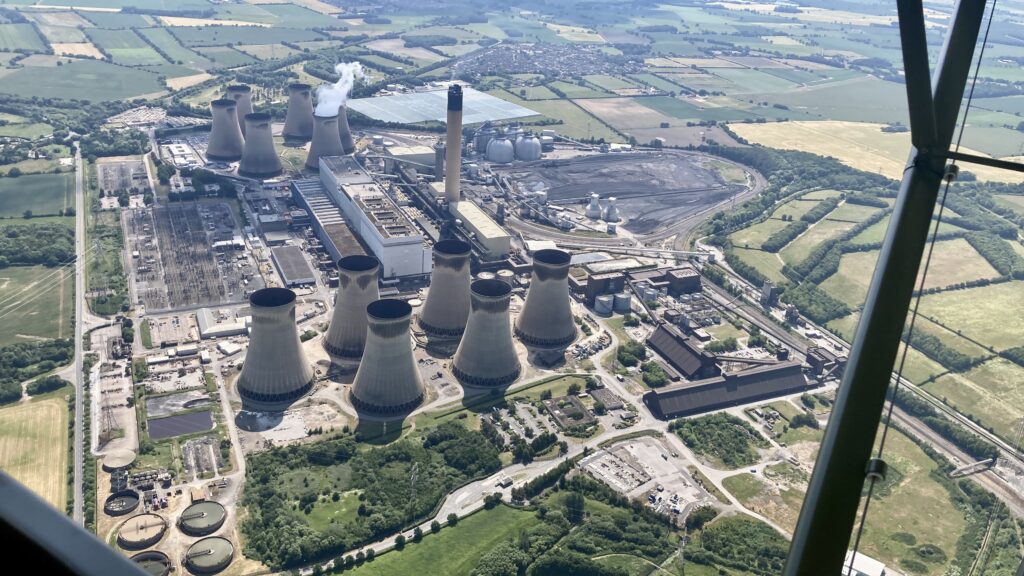
Last time we went to Gamston, we had to fly around the Class D airspace at Doncaster Sheffield Airport. The airport closed last year and the airspace was removed, so this time it was straight over the top:
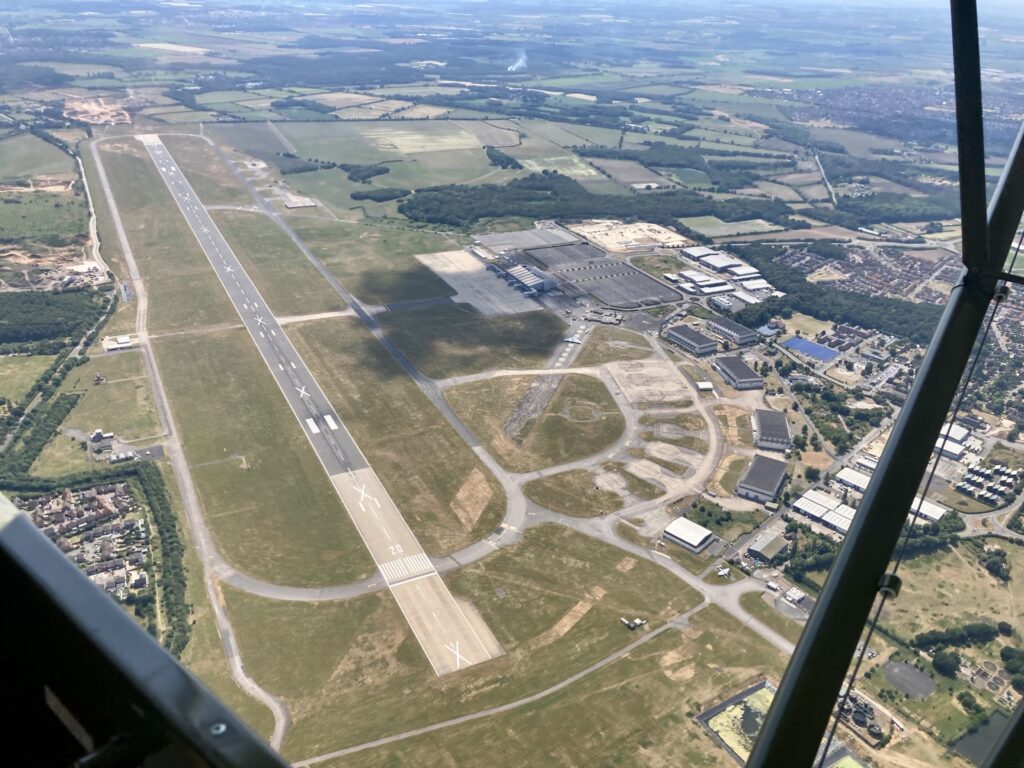
No photos from Gamston – they don’t allow now them due to the sensitive nature of some of the motor industry testing that uses the runway, but suffice to say the refuel was fast and efficient, reception helped me with taxis to the hotel, and the sleep was the sleep of the exhausted!
Next day, after a huge hotel breakfast, we took off for Wickenby. The original plan was for a short 25 minute transit routing around the Red Arrows restricted area at Scampton:
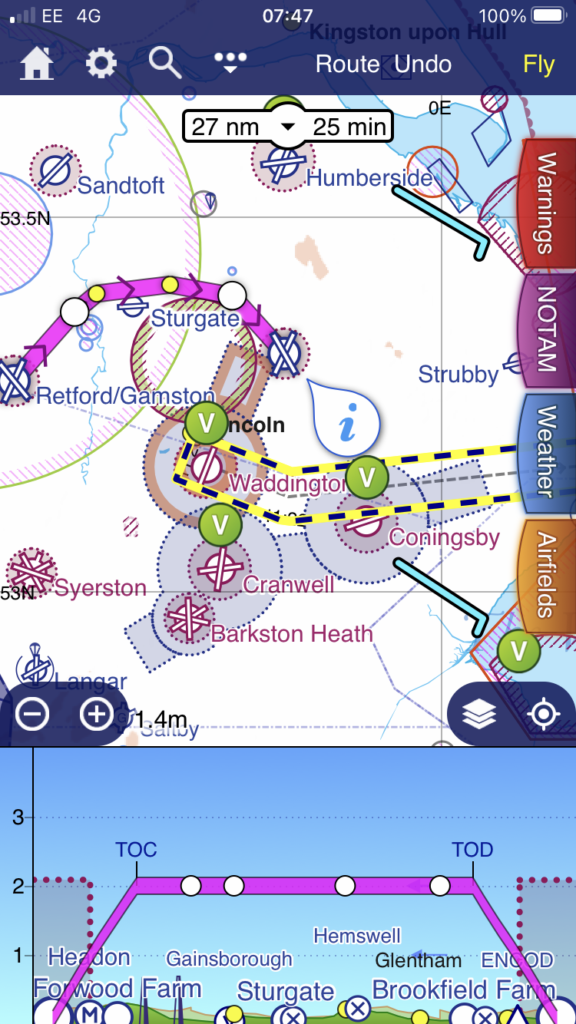
An early morning check of the NOTAMS showed that the restricted area was deactivated, so I was able to plan a more direct route. The Cub flies so low that I still had mobile signal and was able to double confirm just before entering:
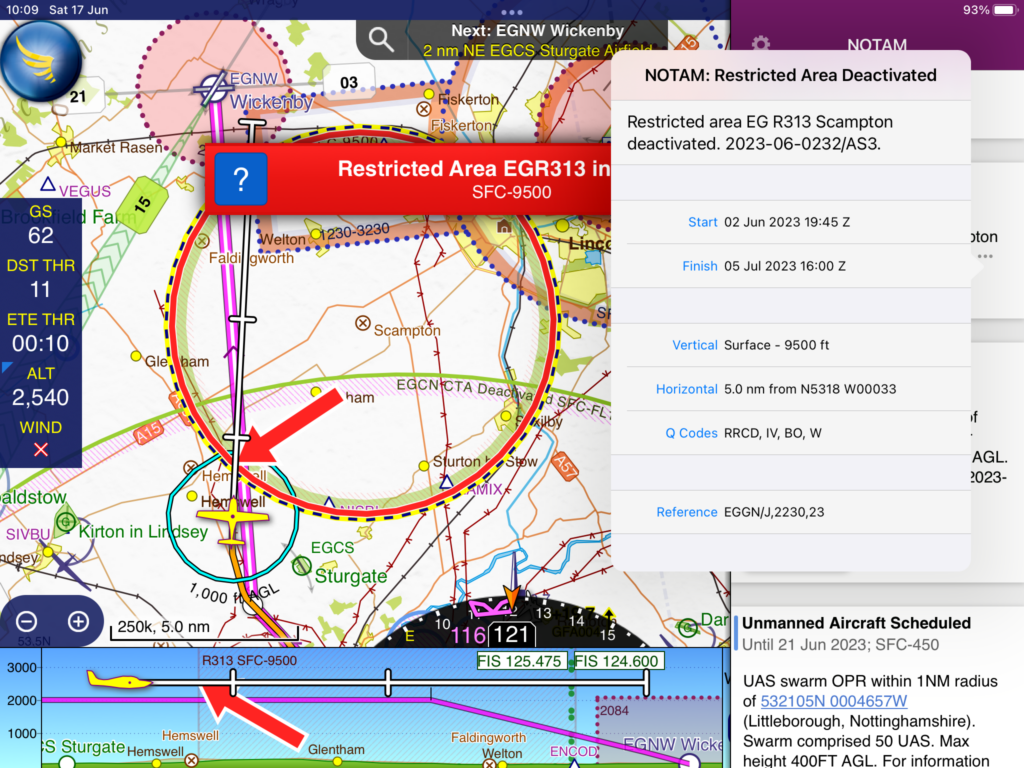
We followed another Cub into the circuit at Wickenby, landed, and made our way to parking. Landing just behind us was Dave Dash in his L4 which parked next to us. Dave had flown in from Great Oakley, near Harwich:
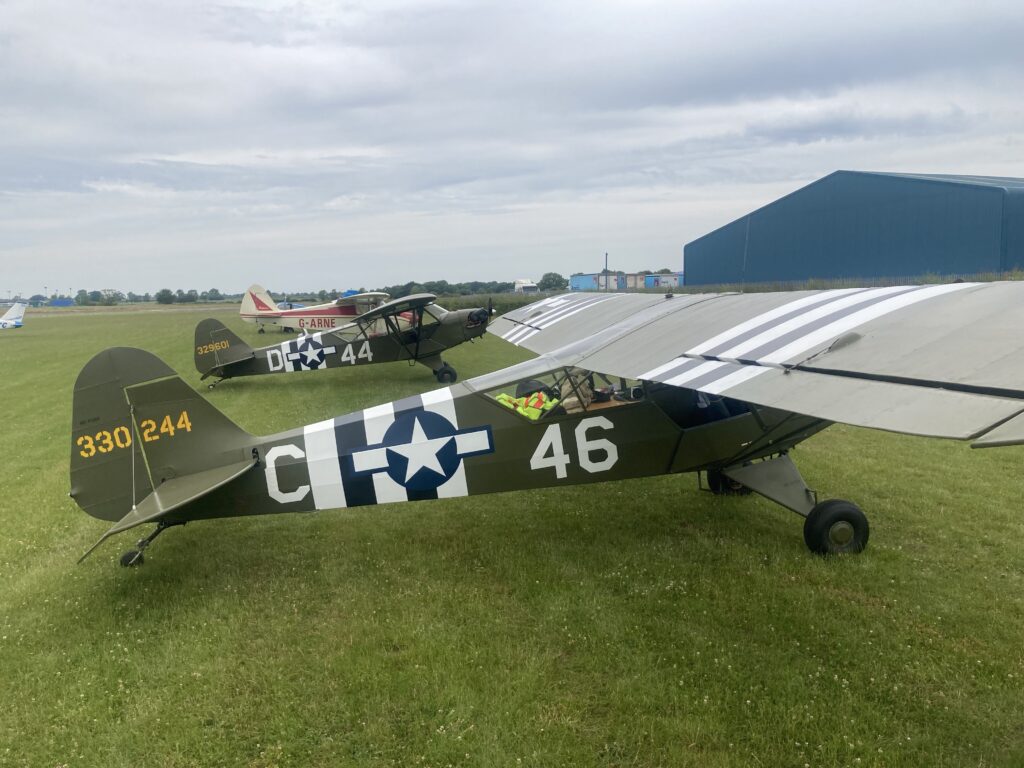
Dave’s Cub is a lovely permit-to-fly machine, and the two of them looked great sitting together on the grass like cubs are supposed to do (unless they are up in the air obviously). Sit on the grass, not look great. But they look great too.
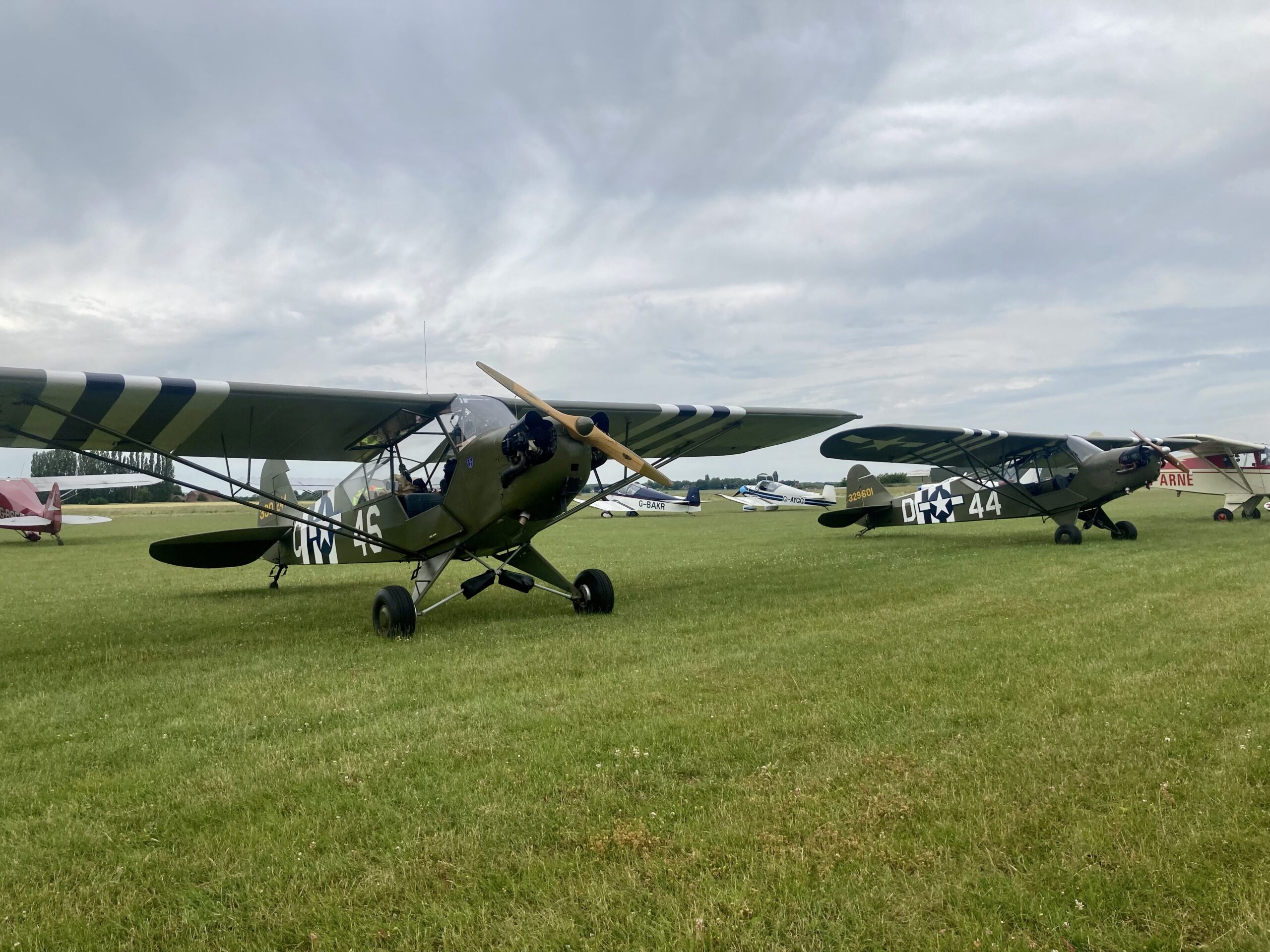
Already parked up was Glen Molloy’s restored Italian Army Super Cub. Glen was my first ever flight commander on my first ever operational squadron in the RAF. His Cub won the award for “Best Restoration” at the LAA rally. He and a gaggle of other aircraft had flown in from Sleap, near Shrewsbury, via an overnight camping stop at Sackville Farm, and the nearby pub!
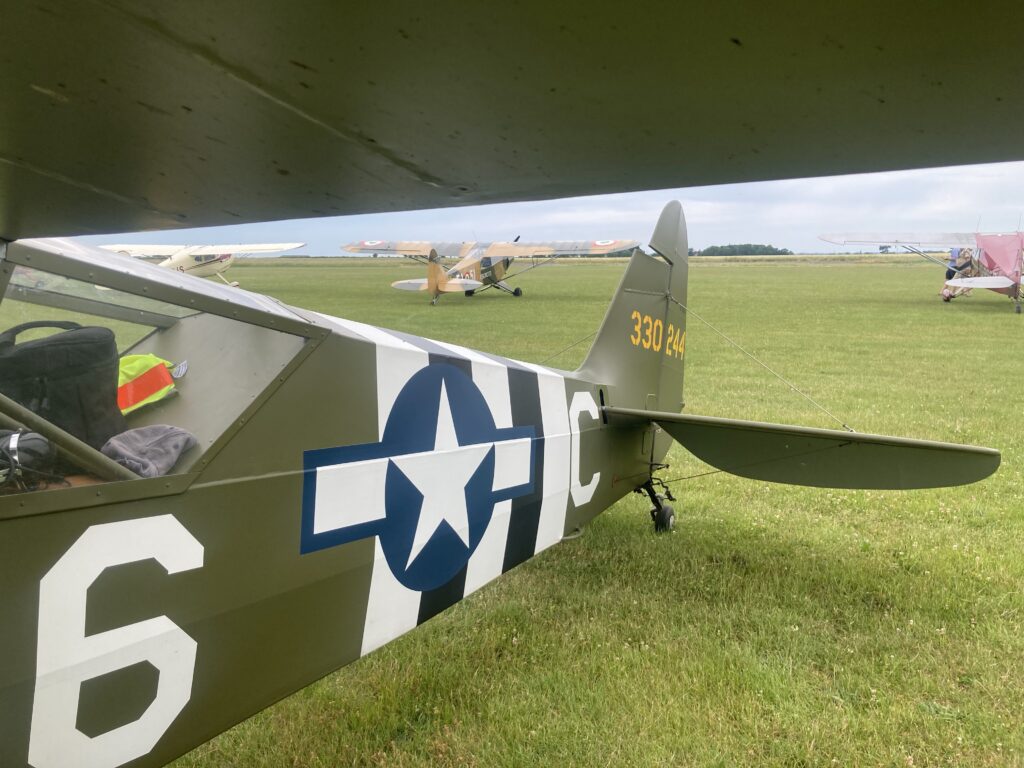
Also flying in from Sleap was Paul Latham in this yellow J3, which shares a hangar there with Glen’s Super Cub and a couple of others. Known as “The Vulture Squadron” they normally fly together but this time Paul flew in on the day and missed the camping at Sackville Farm. Paul was also on my first ever operational squadron in the RAF – it was great to see them both after 30 years…
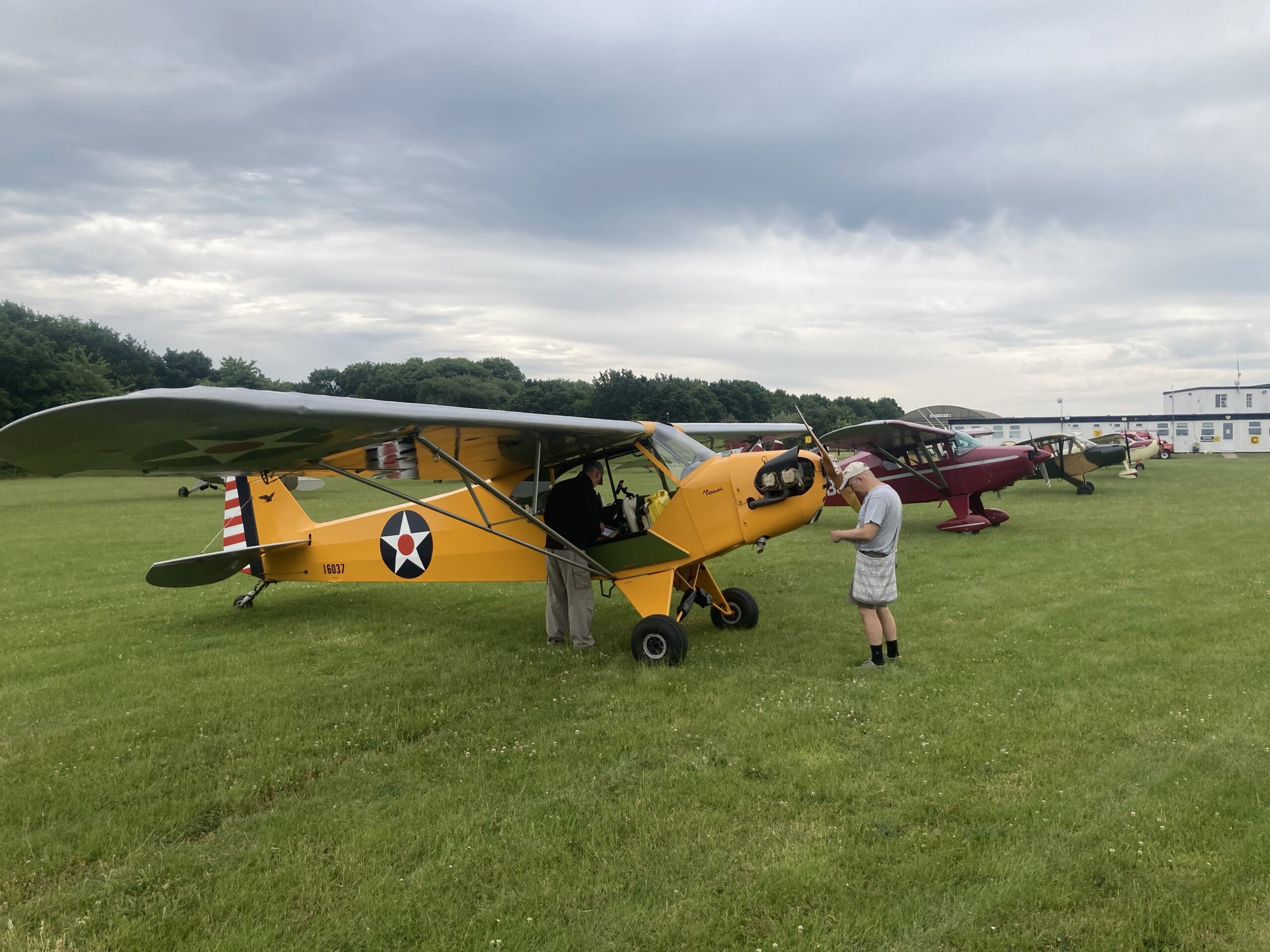
Another old friend was Richard Keech, who used to fly Boeings out of Manchester for Air2000. We flew together a couple of times on both the 757 and the 767. Richard and Mike and Charlie run the VPAC – their “merch” selling skills are second to none:
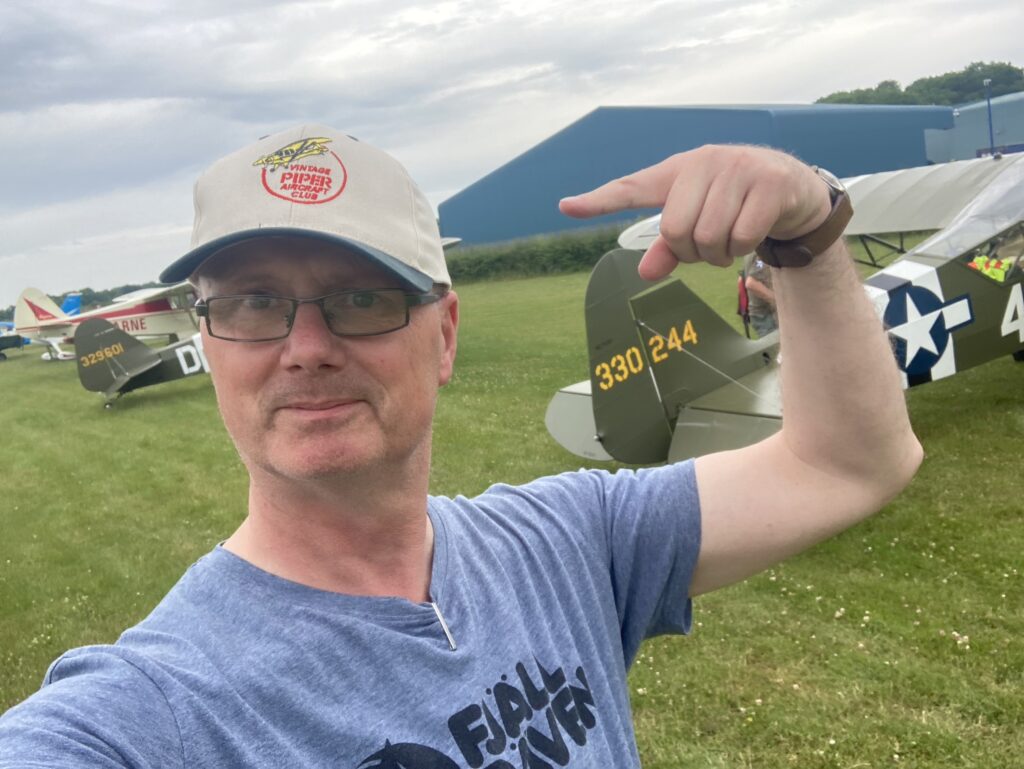
With a long way to go home I wasn’t able to stay for the whole day, but the good news was that there was a hefty tail wind for the trek up the east coast. We, the Cub and I, said our goodbyes and headed off over the Lincolnshire countryside. It’s pretty obvious why it’s called “Bomber County” – the flat landscape lends itself to quickly building airfields in times of need. The man who owned and farmed the land at Wickenby, one Mr Bowser (a good aeronautical name) got a call one morning from surveyors to say his land might be used for an airfield and the bulldozers were hard at work clearing the site by 3pm the very same day! Times of need indeed.
Northbound towards the first fuel stop at Breighton, near Selby in Yorkshire:
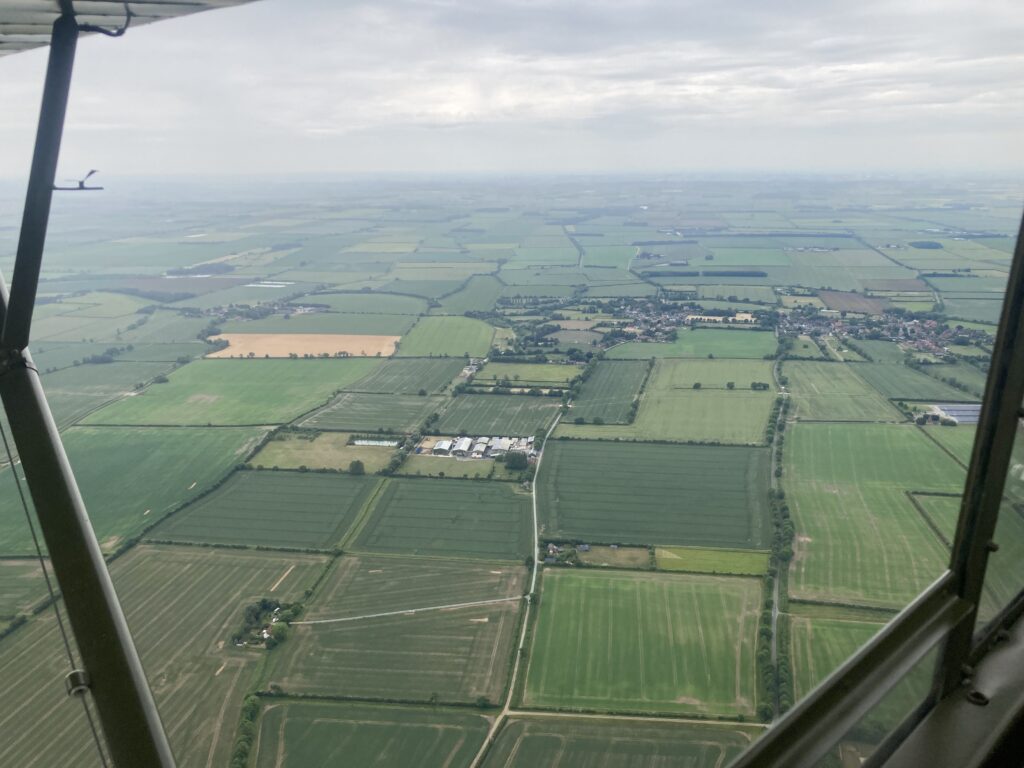
Breighton is the home of the “Real Aeroplane Club” who operate a fleet of various exotic and vintage aircraft. The Cub was warmly welcomed and the self service fuel pumps were simple and quick to use. Just had to taxi into the little alcove next to the office:
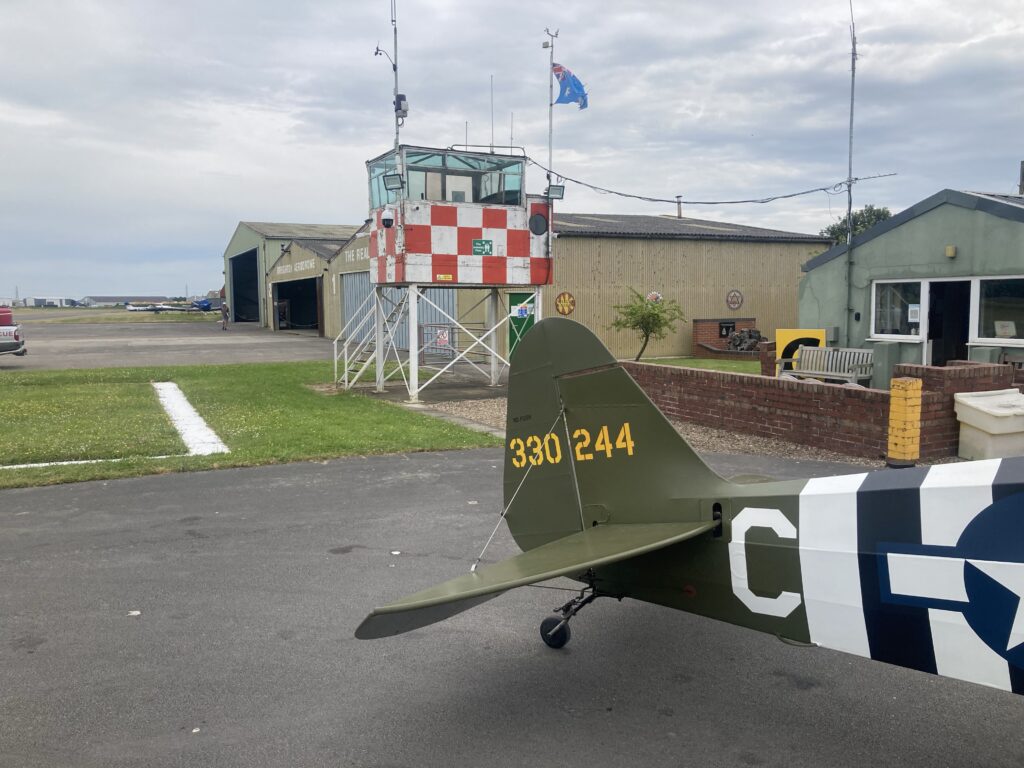
After fuelling up the aircraft was pushed to the grass to free up the pumps and let me visit the cafe. It was only a 30 minute stop but the aircraft received quite a bit of attention from the photographers. One even had what looked like a 20 foot selfie stick to get a better angle. Sometimes standing on a bollard just isn’t enough…
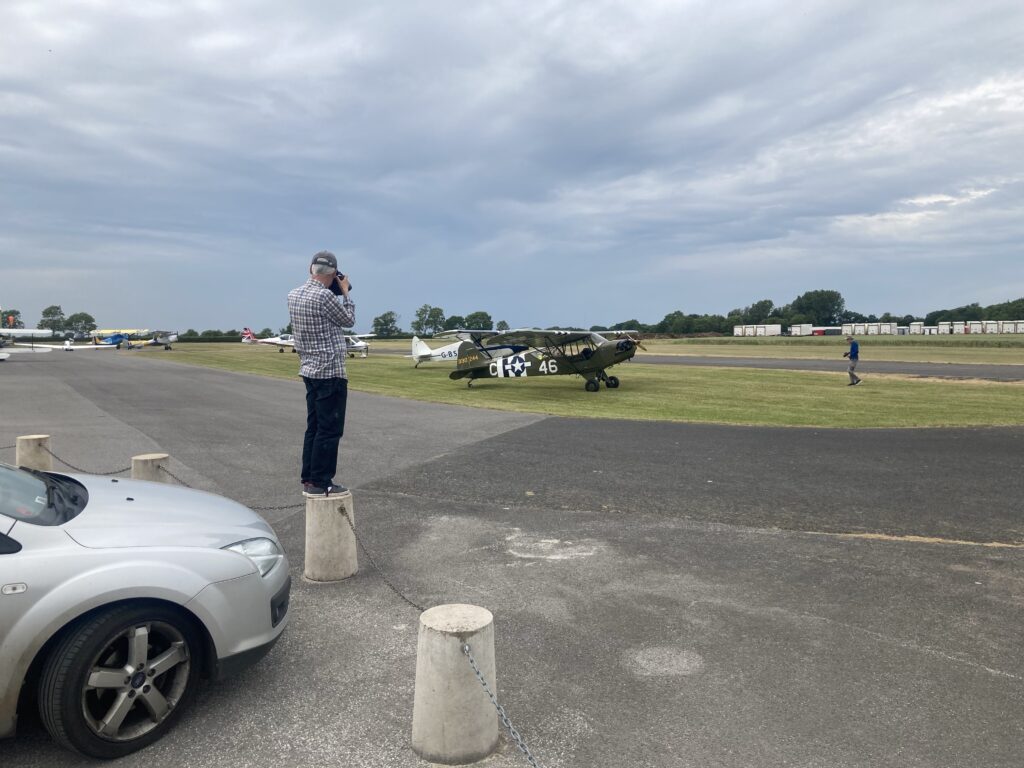
From Breighton it was off to Eshott, with the 20 knot tailwind pushing us along quite nicely. We parked up alongside one of the Eshott Chipmunks and fuelled up:
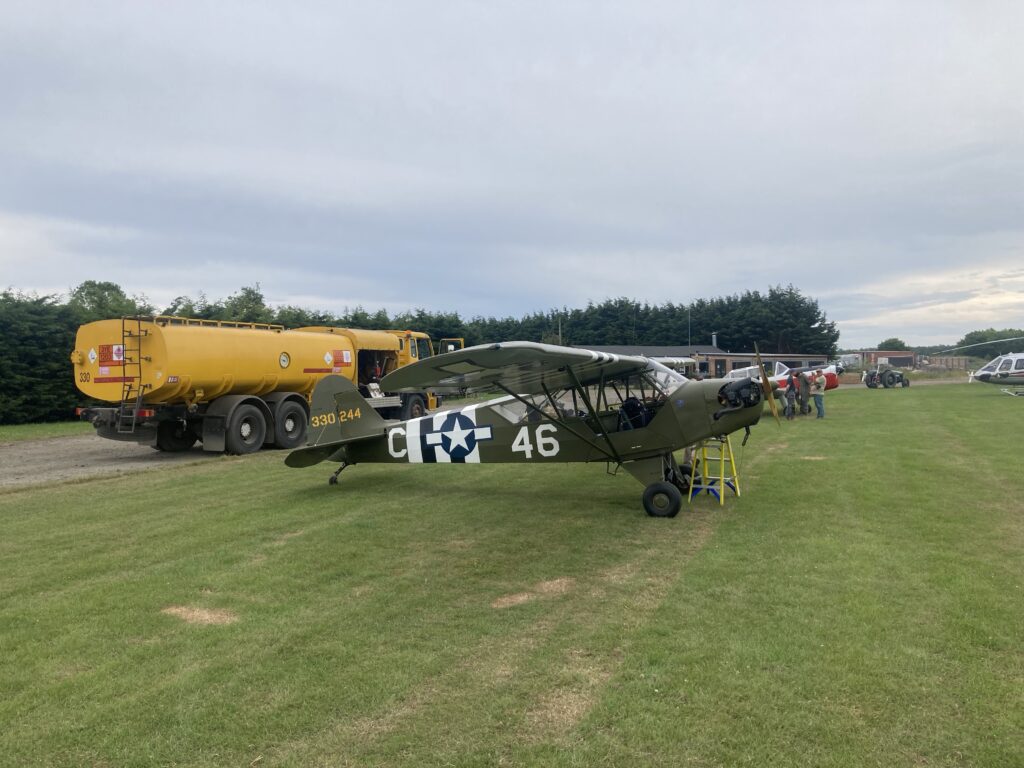
For the last leg I climbed as high as we could, up to about 4000 feet, to get as much advantage from the increased tailwind at altitude, and made for Perth. No photos from this leg as I was getting tired. Finally landed at 1805 and almost needed a crane and a chiropractor to help me get out of the aircraft. Cubs aren’t easy at the best in times but after two days in the cockpit…
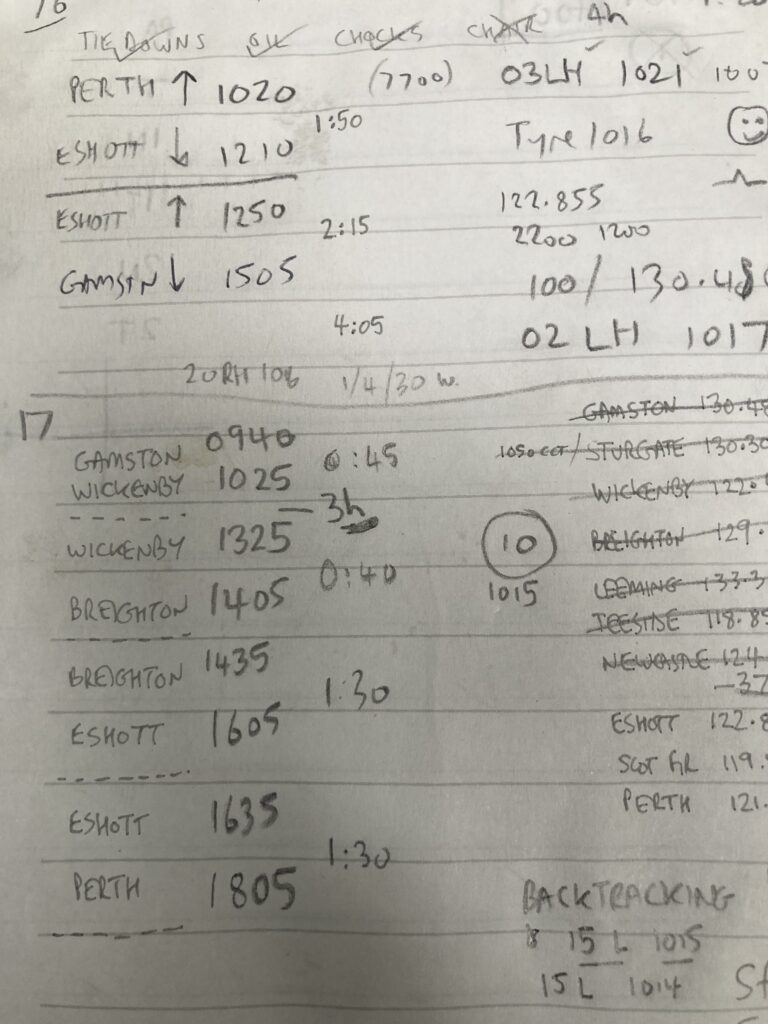
One hotel room, two taxi fares, numerous refuels and landing fees, a new hat and an RAF WIckenby mug, plus 8 hours 30 minutes flown over the 2 days – all for just 3 hours on the ground at the VPAC Fly-In.
Totally worth it!
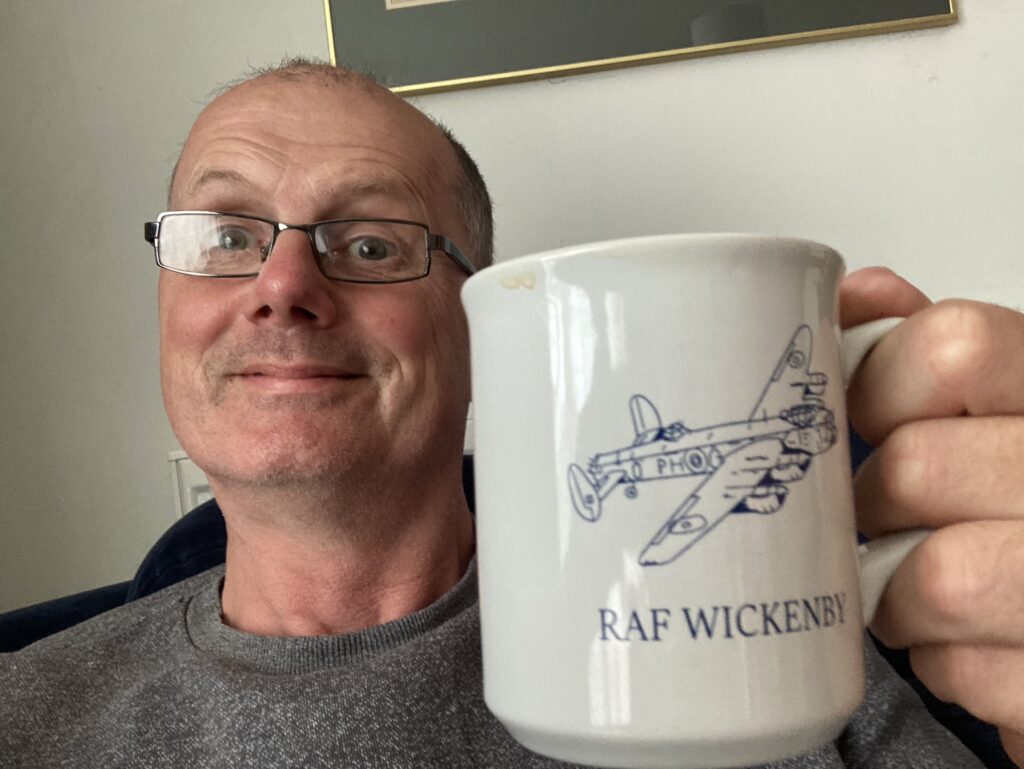
USB Envy
Inspector Ali G was over in Ireland and sent some photos of a nice Cub at Athboy airfield, just to the west of Navan. It’s not in the seemingly standard D-Day invasion stripes colour scheme, just plain green. This is actually more likely, as the “invasion stripe era” only lasted for six months. According to Wikipedia:
“One month after D-Day the stripes were ordered removed from planes’ upper surfaces to make them more difficult to spot on the ground at forward bases in France. They were completely removed by the end of 1944 after the Allies achieved total air supremacy over France.”
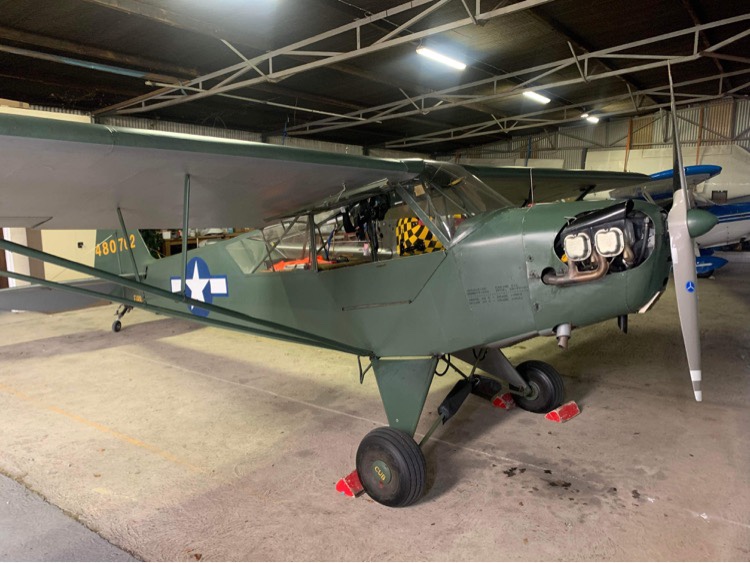
Of interest to me was the photo of the cockpit. There is an 8.33 radio and a Mode-S transponder like ours (albeit in the opposite wing root to ours), but also a twin plug USB charging port!
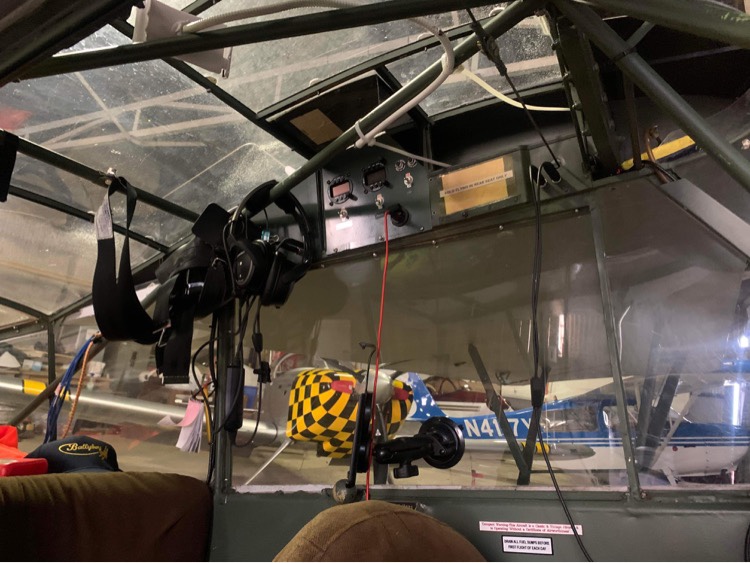
A USB charger would be great for running Skydemon in flight. Longer distance multi-day trips like Normandy next summer would seriously benefit from inflight charging. I have to take power packs on longer journeys to keep it running. A short bumble around the patch like the screenshot below is OK:
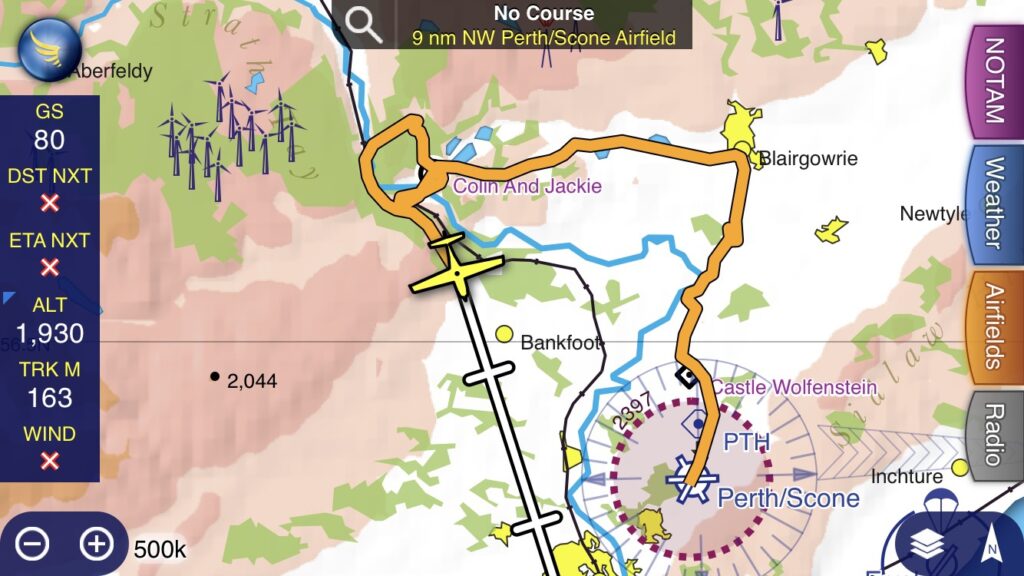
The overnight trip to the VPAC meet at Wickenby needed a forest of cables, power packs and cables. Trip report to come soon…
Oil Change
Time for a 25 hour inspection and oil change on the RV:
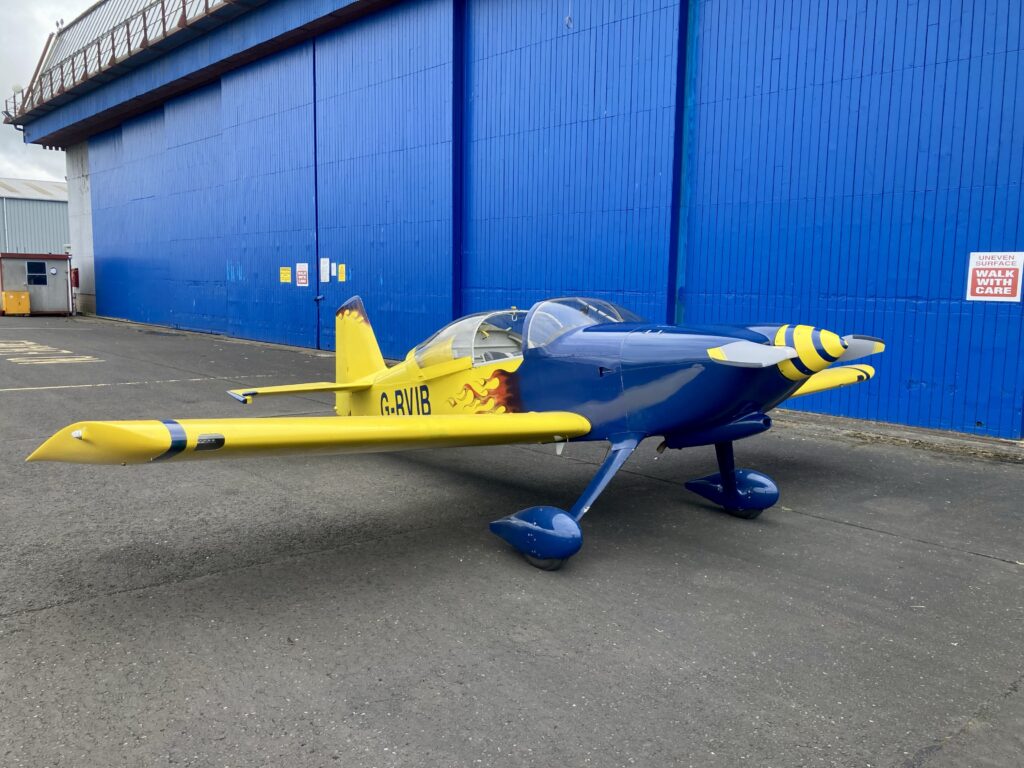
Cold oil doesn’t flow so well out of the sump, what better way to warm it up than to go flying…
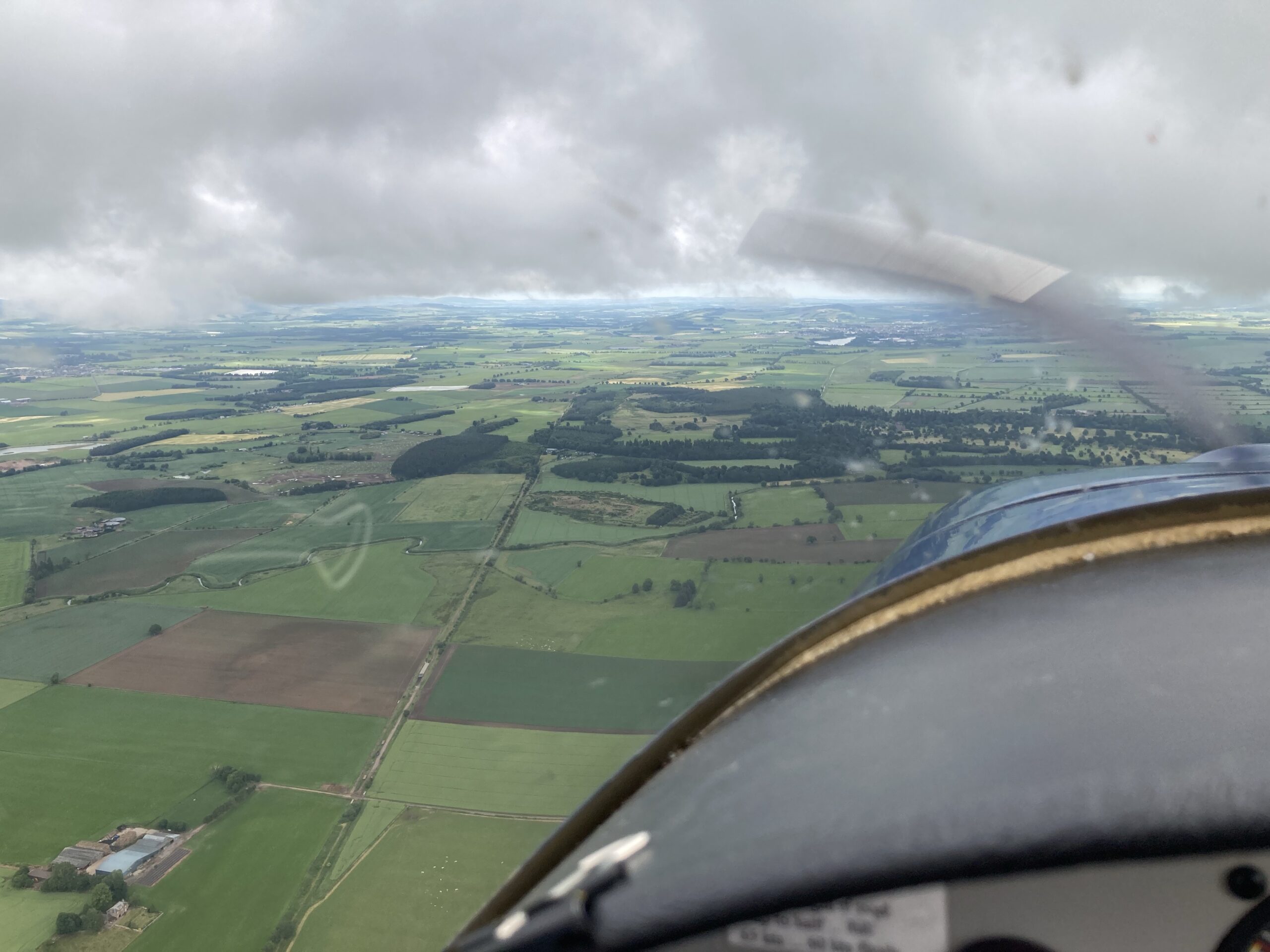
Initially there was quite a low cloudbase as we headed out towards Montrose:
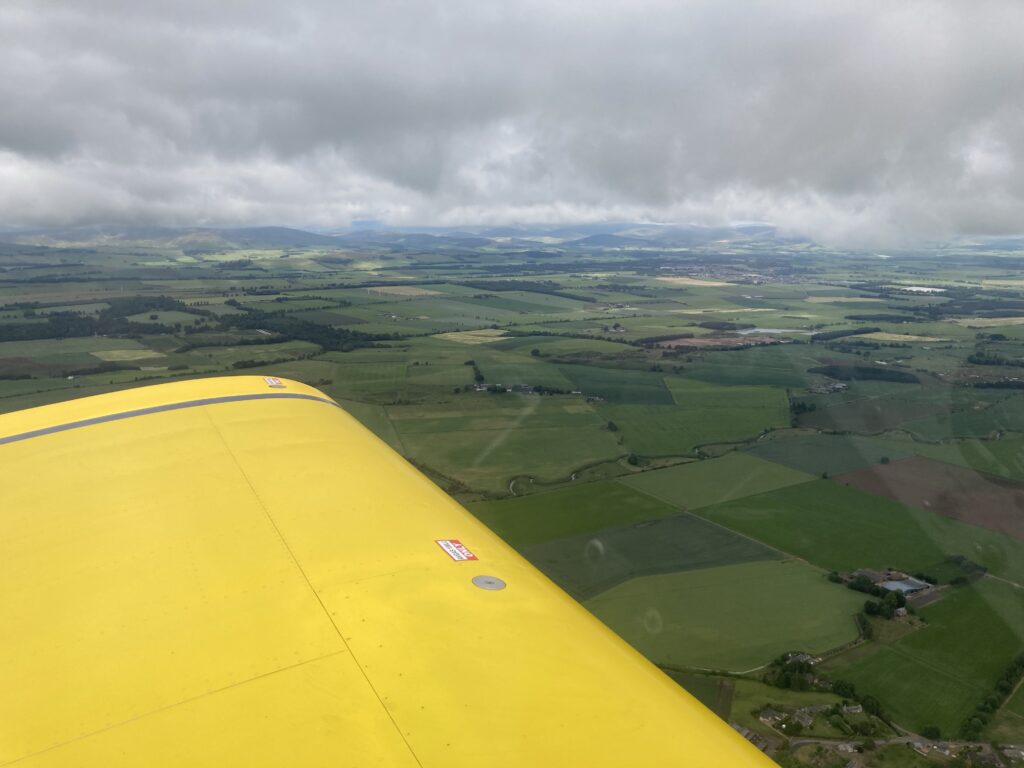
But then there was a big gap and we powered up into the blue:
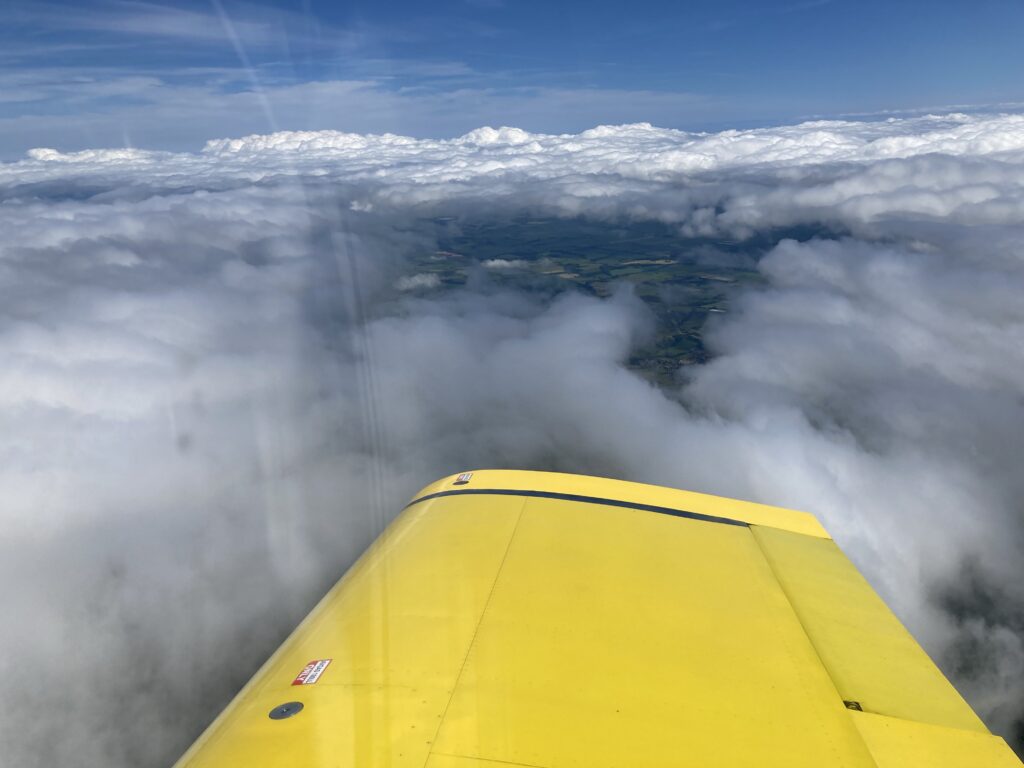
Centre of this pic is a contrail way off over the North Sea…
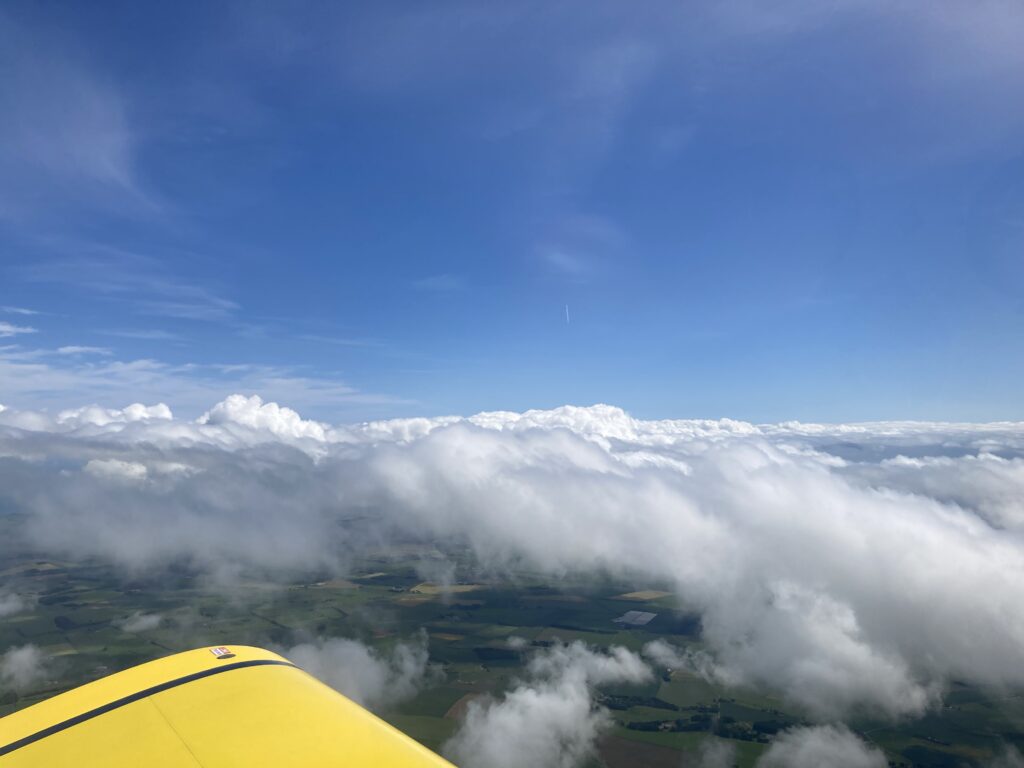
…which the SkyEcho unit identified as Lufthansa 452, Munich to Los Angeles.
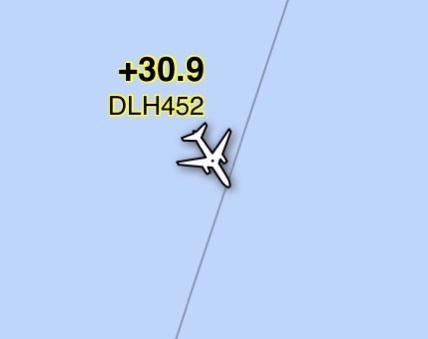
Off the wingtip is the old WW2 airfield of Kinnell, which is probably what RAF personnel said when they heard that they were posted there!
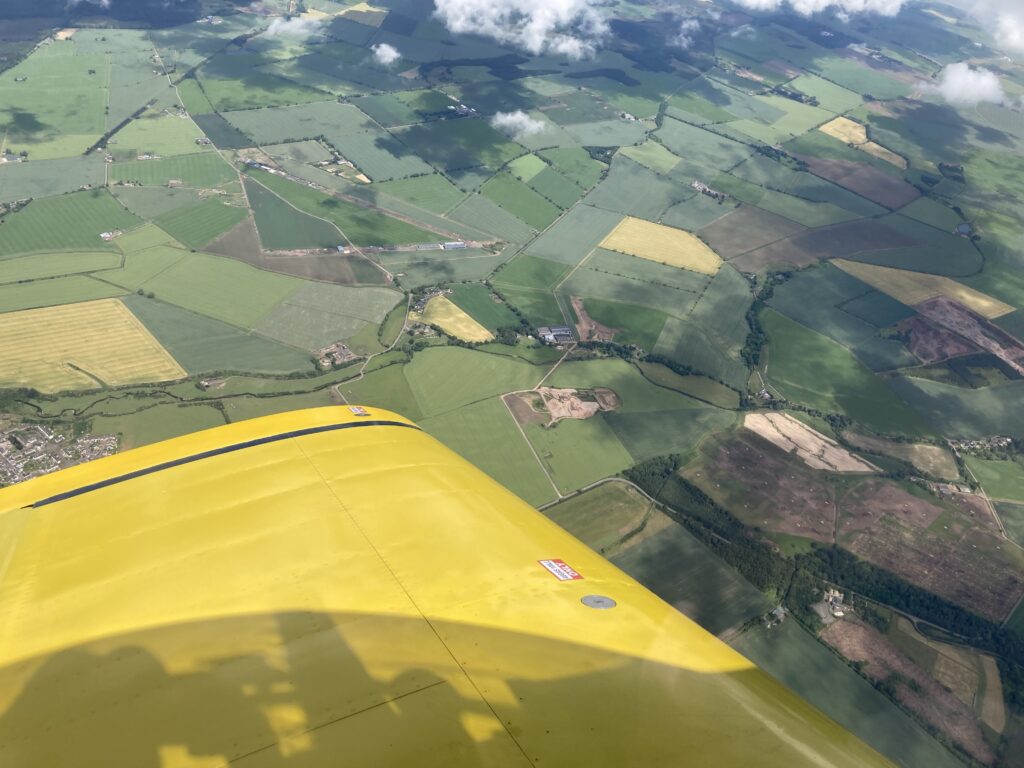
Montrose harbour and the basin looking nice in the sunlight now that the clouds were clearing a bit…
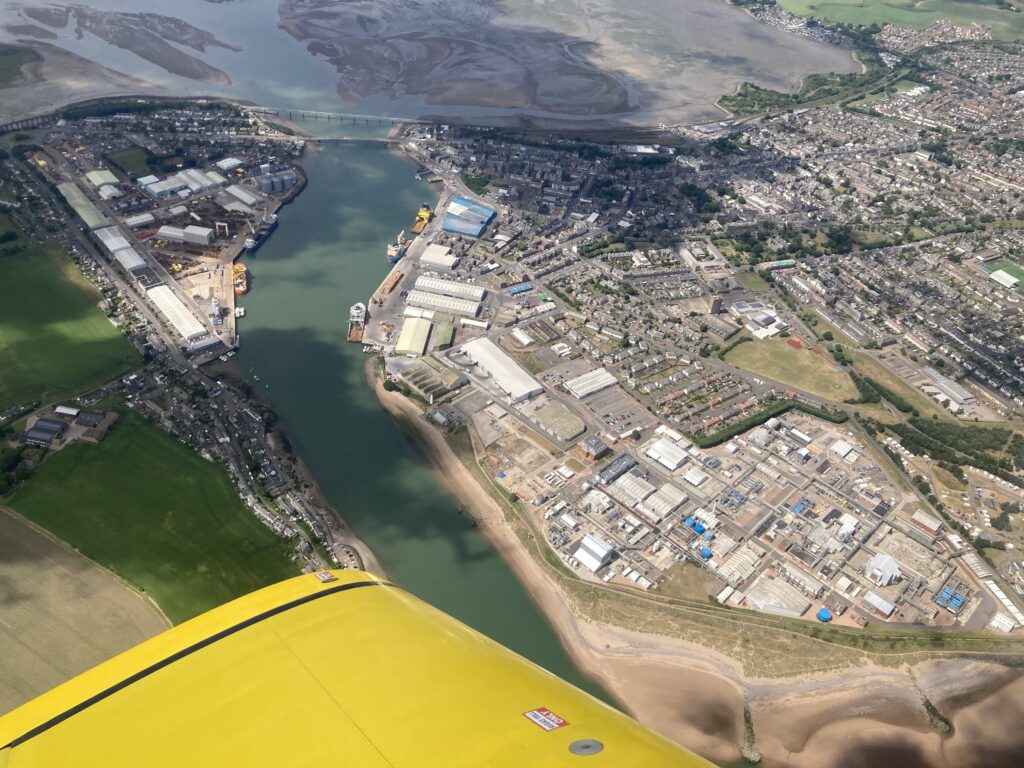
After 1.3 flying hours, the oil should be warmed up enough. Back to base…into the hangar, cowlings off and drain the oil. Despite the quick-drain plug making it easy, I still managed to spill some on the floor.
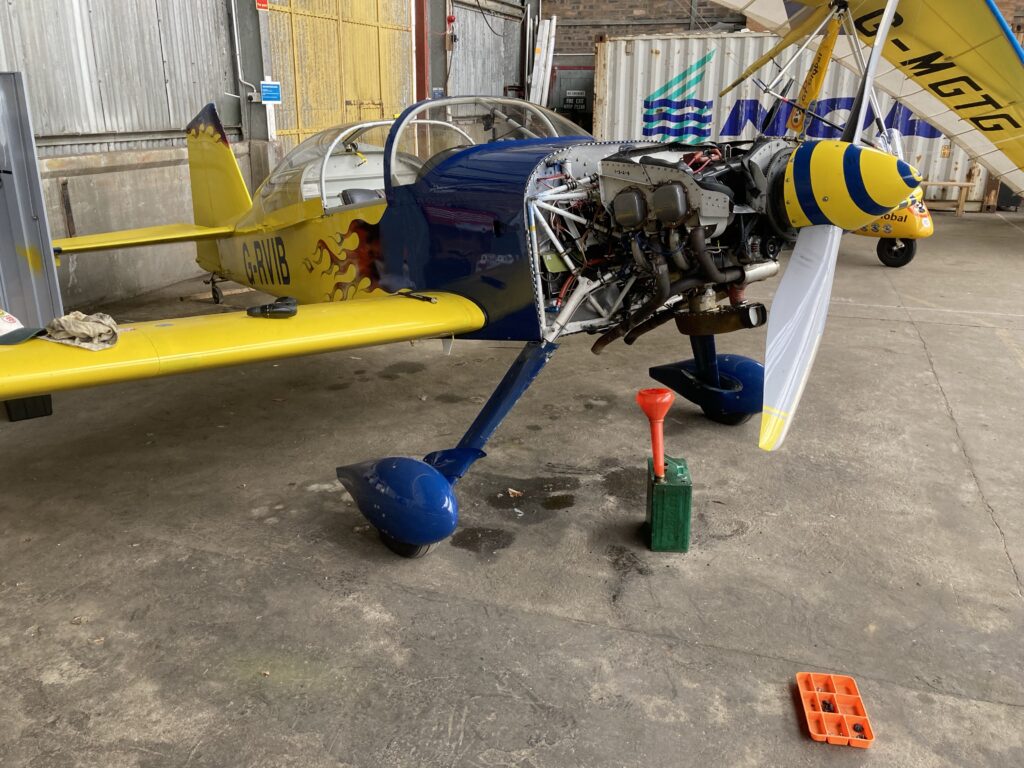
A few bits of cardboard and a chocolate tin “drip tray” and all is well.
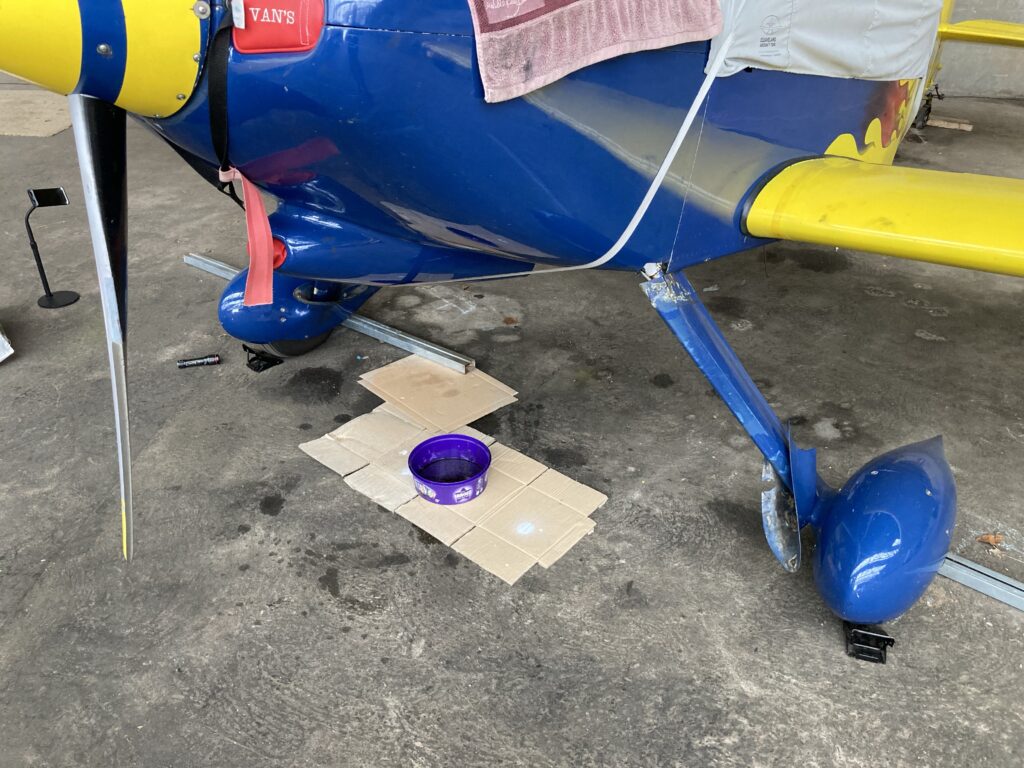
As well as the oil change, the 25 hour inspection is just a general look around for leaks, cracks, broken wires etc. All hinges get lubricated and the tyre pressures adjusted where necessary. The yellow tape on the wing root screw line is replaced, and the aircraft gets a bit of a wipe down…WD40 and a rag for any oil stains, and baby wipes for crusted on insects on the prop and leading edges. It’s just an interim look around between the annual inspections.
All was good and in the guise of a leak check, it was time to fly again. The aircraft is good-to-go for another 25 hours. Just as well, as the Cub is in with the engineers for its annual, and will be out of action for a couple of weeks. Sometimes it’s a pain running more than one aircraft, and sometimes it’s an advantage…
D + 6
It’s 12 June, so D-Day plus 6. It was on D+6 that the 79th Infantry Division started disembarking on Utah Beach as part of the follow-up forces. The division was fully ashore by D+8, and entered combat on the 19th, pushing past Valognes towards Cherbourg.
The L4 Grasshoppers (including ours) of the 79th Inf Div played a large part, directing the fall of artillery, and perhaps even naval gunfire, as the big guns of the RN and USN were still parked off the beaches. I can’t find any information about where they flew from, probably just a random field cleared of cows.
There was one airfield hastily constructed on 6 June by IX Engineering Command as an emergency landing ground at Poupeville near Sainte-Marie-du-Mont. The site of ELS-1 has long since returned to agriculture, but at the time it was a “sod 2000ft runway” – about 610m in modern terms. Looking at Google Earth it appears that the engineers just had to knock out a small bit of hedgeline to combine two fields into one and… Tadaaaa! Instant airfield, just remove cows.
Some of the liaison aircraft did fly across to Normandy, but a large number will have come ashore over the beaches packed into a “Deuce-and-a-half” truck. I came across this photo recently (Source: internet) which shows a reproduction of the package:
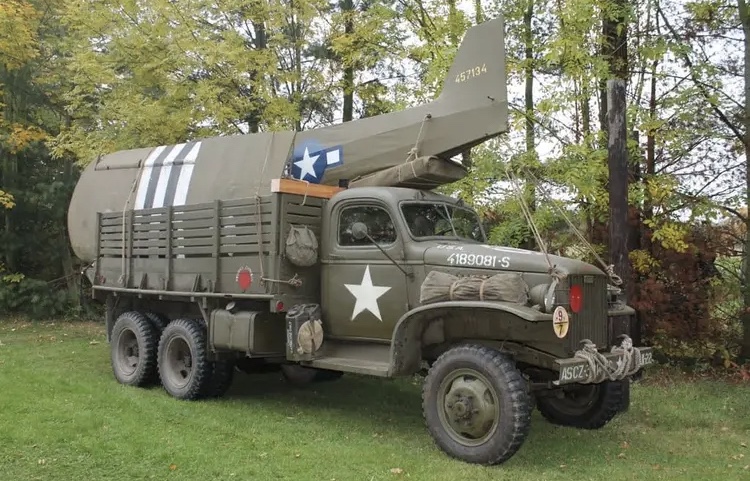
Whether that is a real Cub or a model is not known, it would seem a shame to use a real aircraft like this, perhaps it is an unserviceable airframe restored just enough to look good. As an exhibit of how things were done 79 years ago it is pretty good.
Talking of 79 years…next year is the 80th anniversary of D-Day. Less than a year until “L-Birds to Normandy 2024” – can’t wait.
Random Photo Dump 2023
Just some photos from the archives. I need to stop taking pictures as there are always far too many to put in the posts, but some of them are quite nice. Others just show random routine stuff. Here’s a selection:
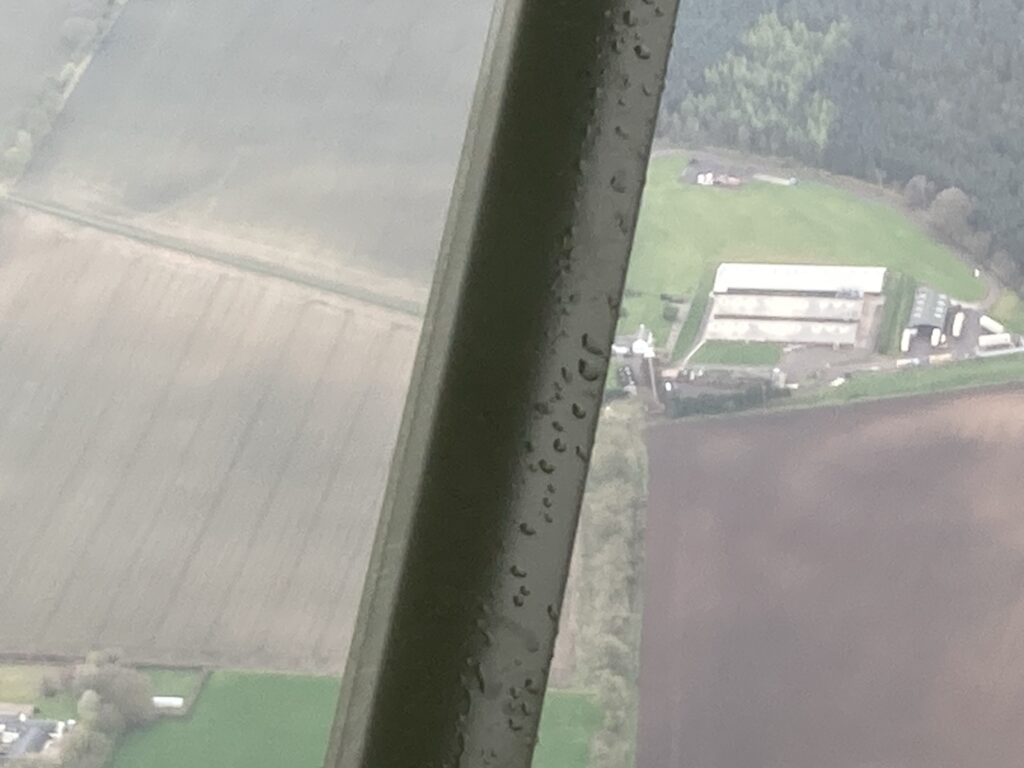
I deliberately went flying under a rain shower to try and give the Cub a wash, but as you can see the raindrops just sat there and didn’t do anything.
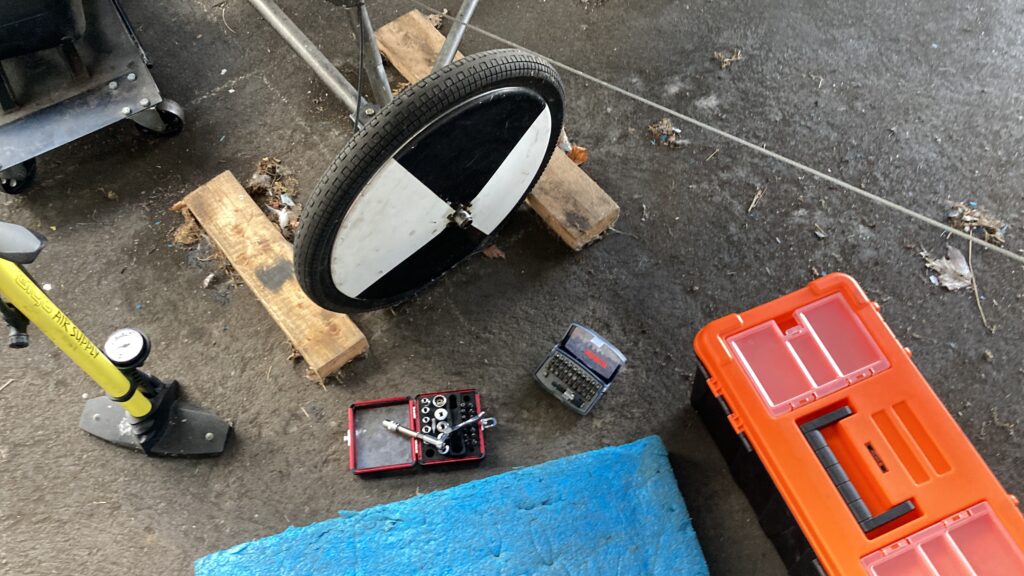
The Eindecker has been a bit neglected recently., with an electrical snag that means we need a new ignition switch. I now have the switch, but haven’t got around to installing it yet. Either the hangar has been too cold or the weather has been too nice. As an interim measure I gave the aircraft a good clean and inspection, pumping up the tyres and lubing the axles. I just need to get on with the switch installation…
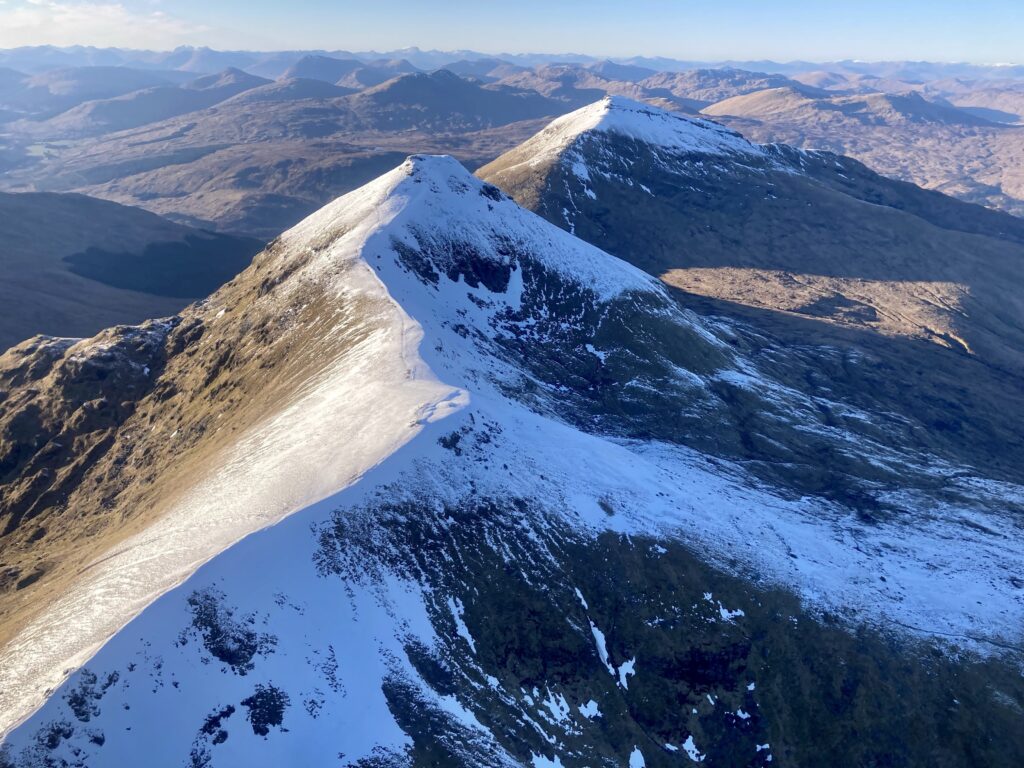
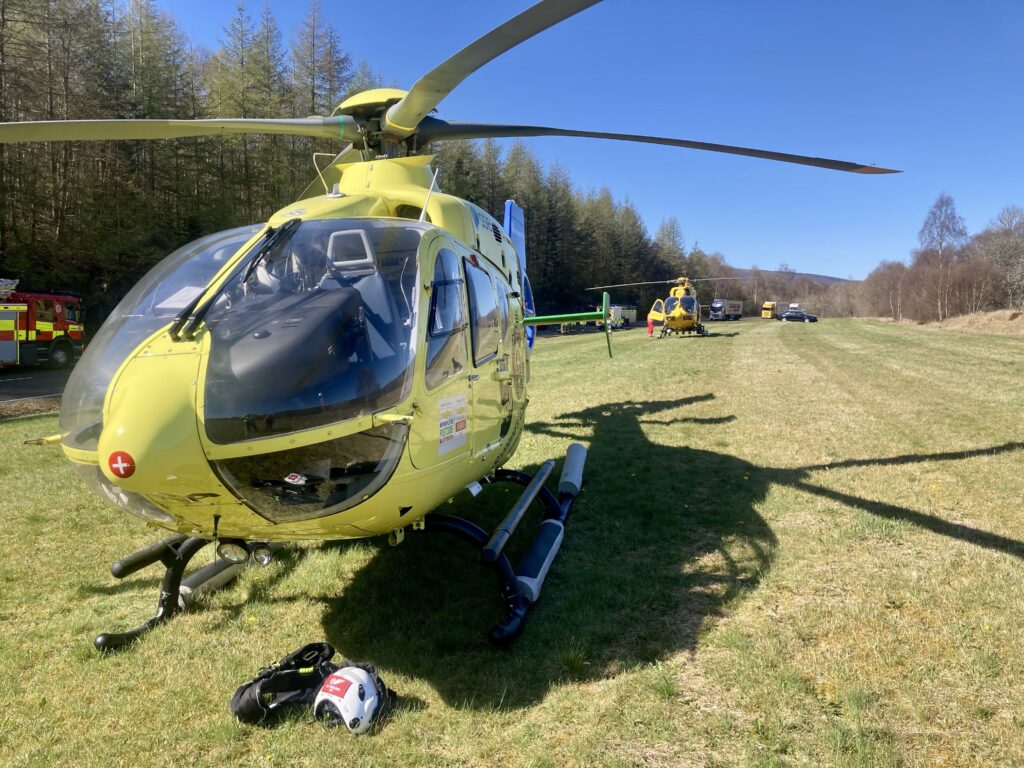
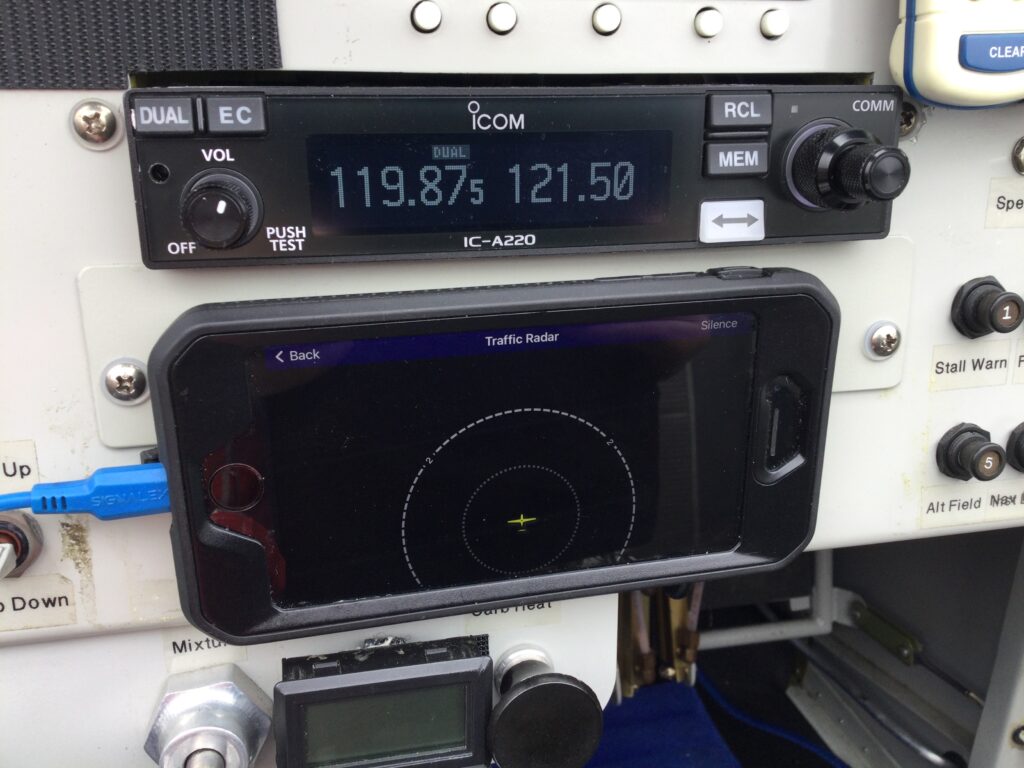
It’s actually my phone stuck on the panel with velcro. I found that the SkyEcho device can feed several devices at once. The phone goes to a full screen traffic display on Skydemon, whereas the iPad only has a small display in the corner of the screen. It can be made slightly bigger but it is nice to have a separate display on the panel. Just like the big airliners.
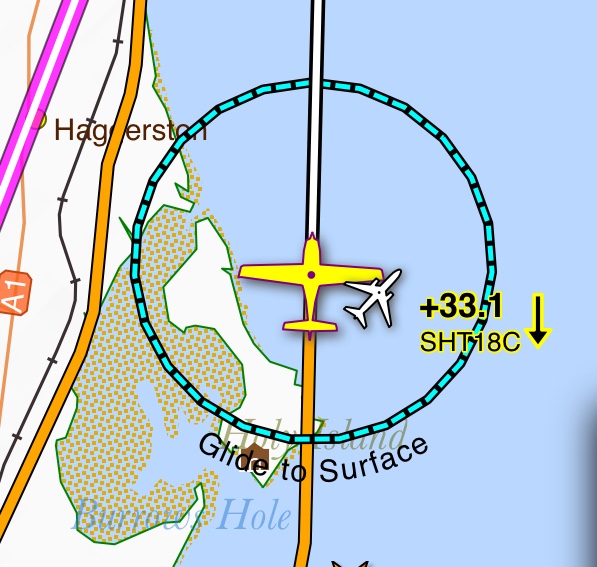
Skydemon still displays traffic on the map too, so we have multiple sources of information.
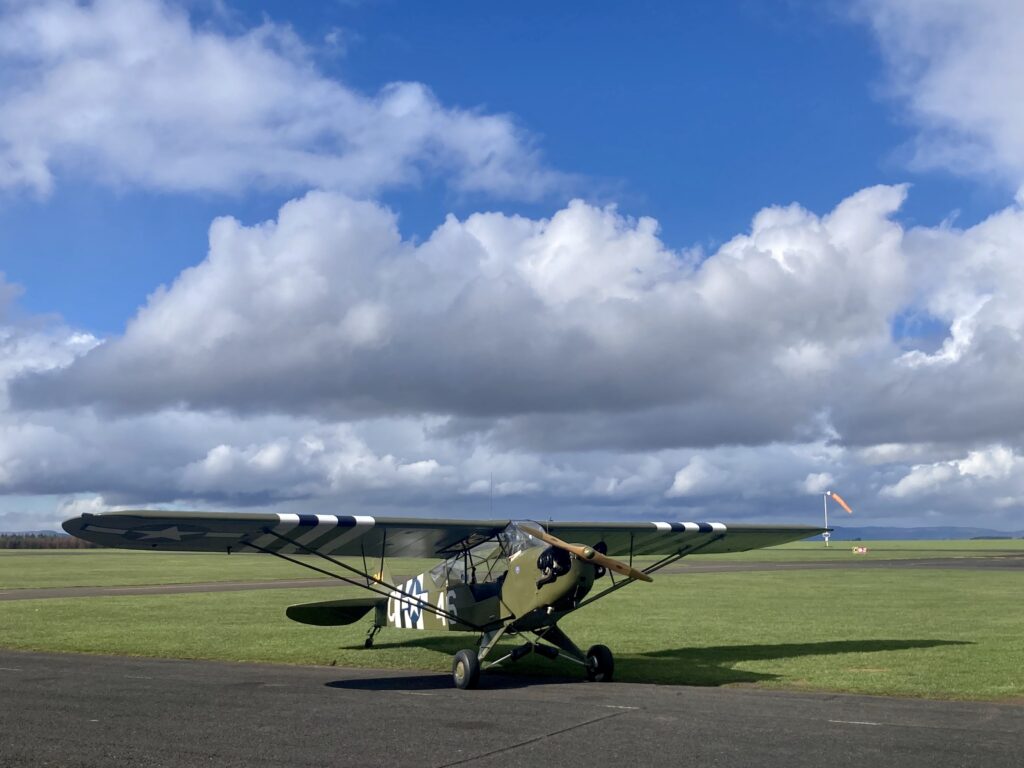
The Fisk Arrival
Good spring weather brings the Cubs out. Here’s Dave’s India Delta in from Cumbernauld:
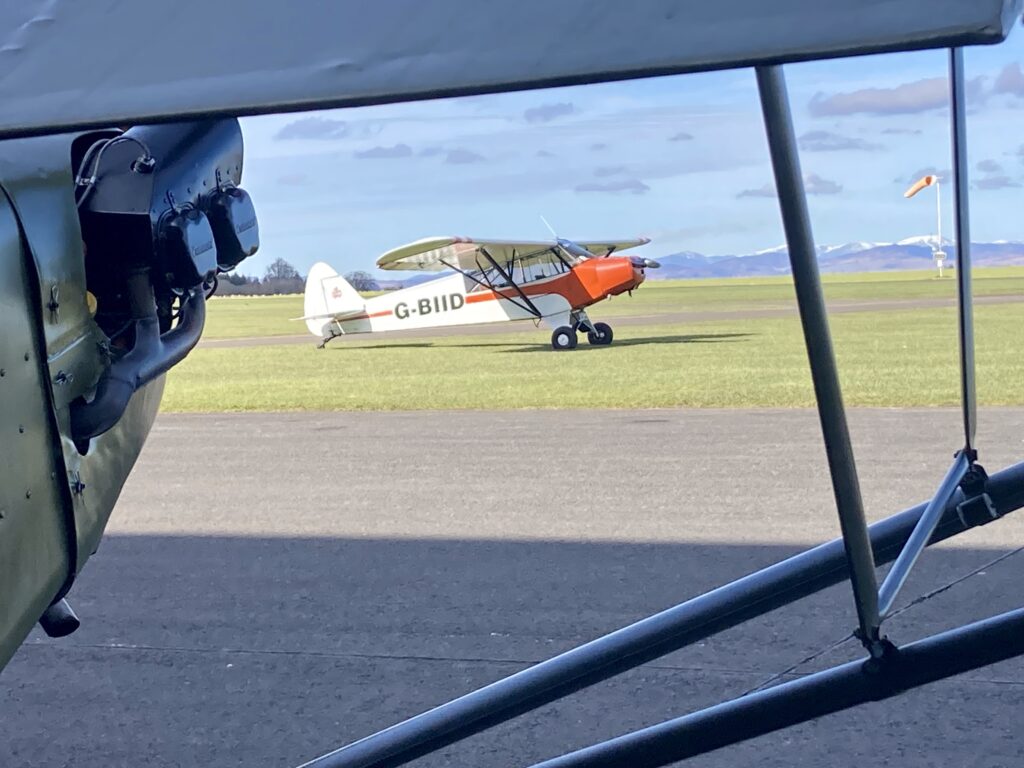
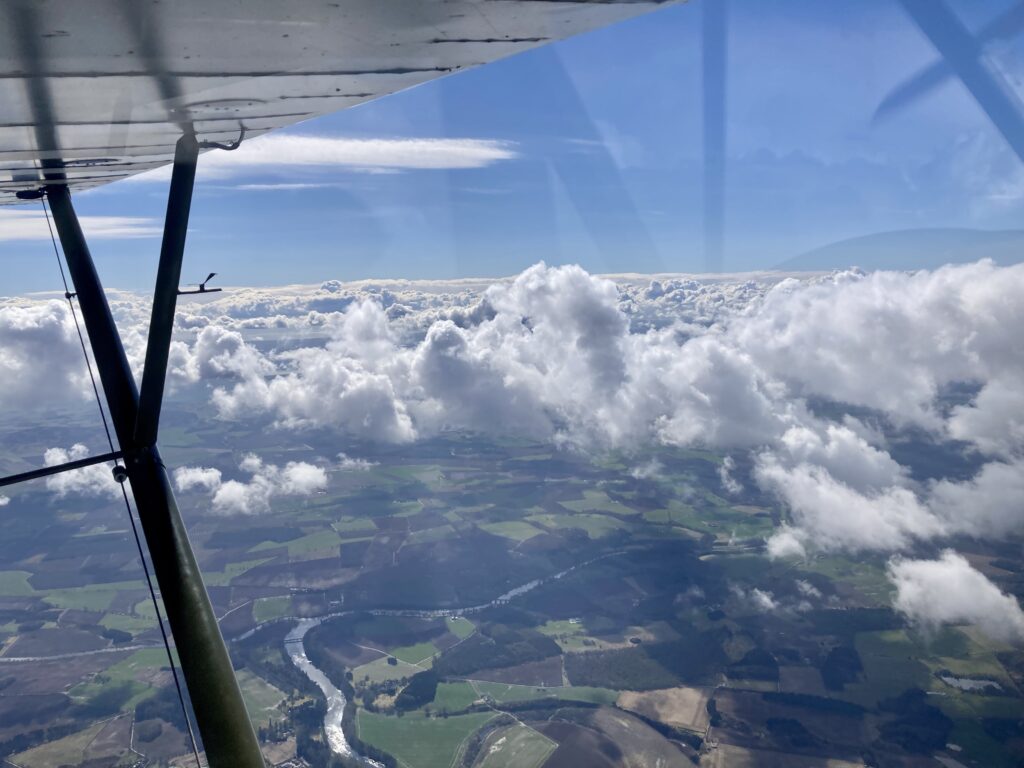
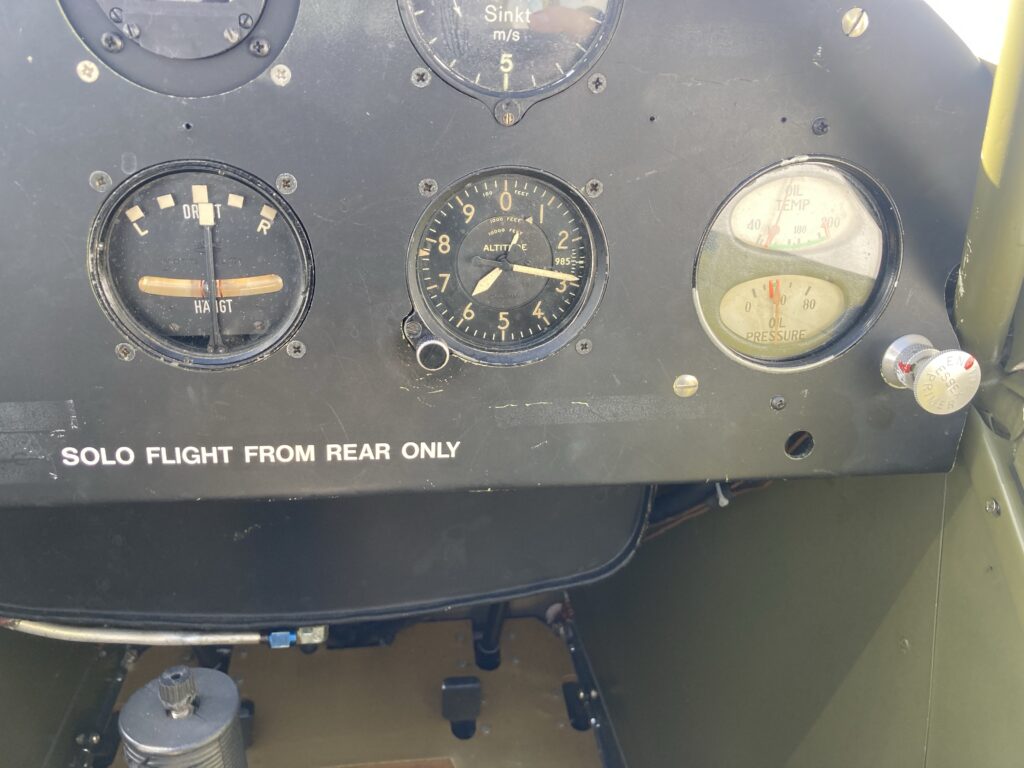
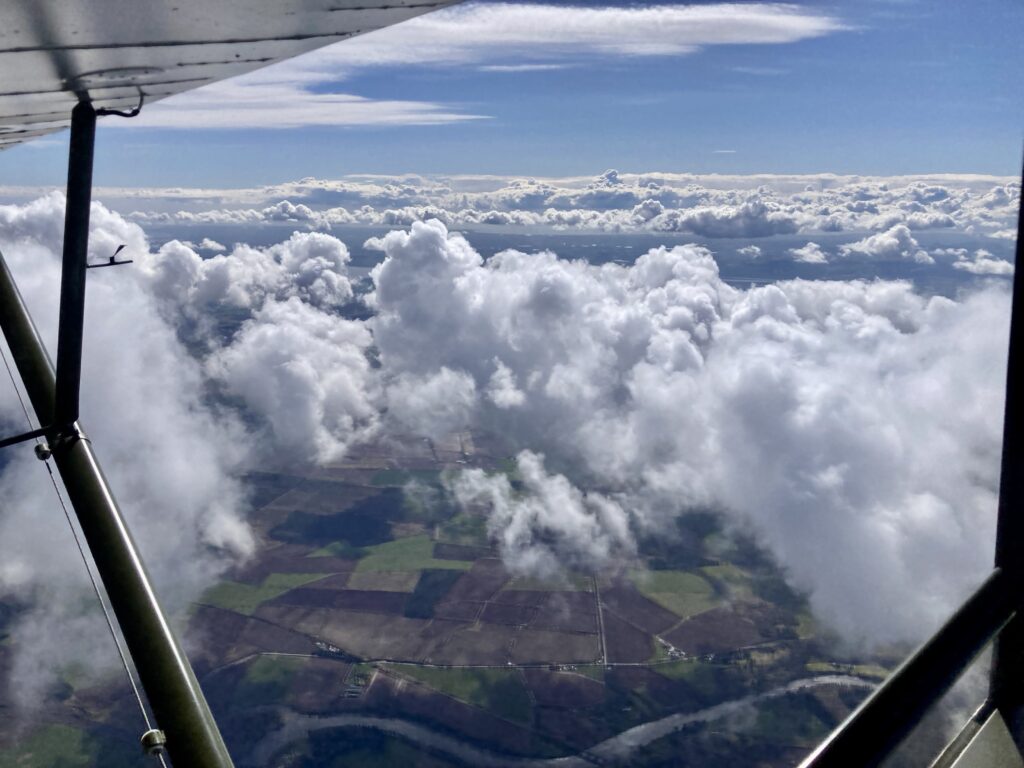
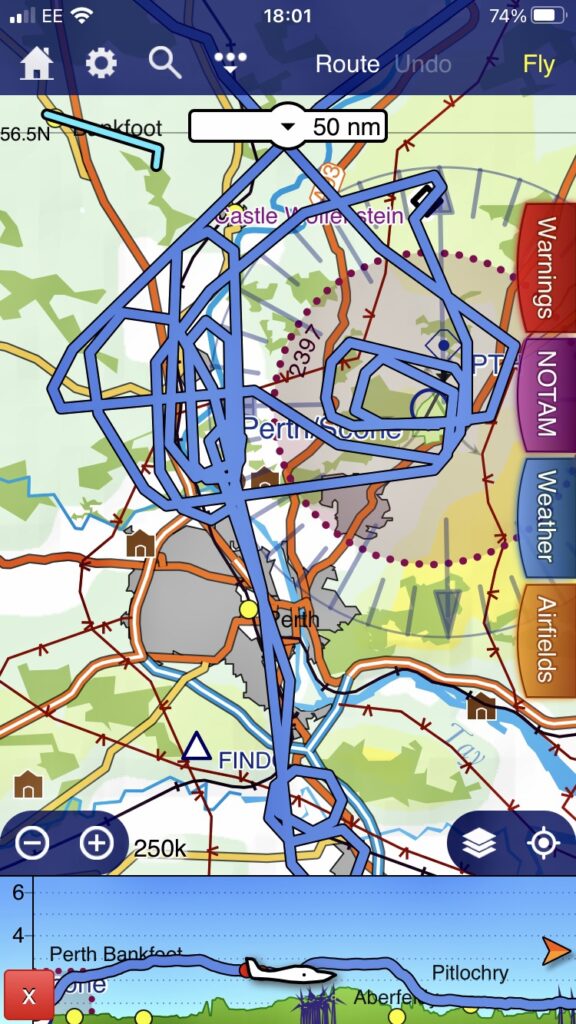
Eventually the airwaves quietened down and we were able to get in to land. I was reminded of the Oshkosh Fisk Arrival. Well, not reminded, because I’ve never flown it, but it’s famous. EAA Airventure is the annual convention held by the Experimental Aircraft Association at Oshkosh, Wisconsin. It’s massive. There are usually about 10,000 visiting aircraft…TEN THOUSAND!
Getting all these aircraft in safely requires a bit of forward planning. The “Special Flight Procedures” NOTAM regularly runs to over 30 pages. Most of the traffic comes via the Fisk arrival from the southwest.
Fly to the town of Ripon, fly at a certain height and speed, follow the railroad tracks northeast to Fisk, stay in line, no overtaking, listen on the radio and do as you are told. There are giant coloured circles marked on the runway to aim for. Apparently it’s not uncommon to have three aircraft touching down simultaneously on the purple, red and yellow dots. It’s organised chaos, and it works.
Here’s a traffic display on one of the quieter days, showing the stream of traffic routing northeast up the tracks towards Fisk:
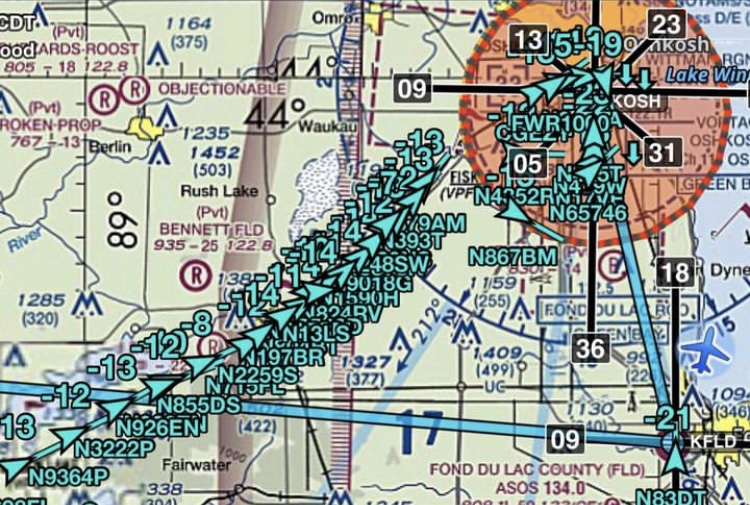
It all looks very organised, compared with the mad scramble into Perth from all points of the compass. I want to have a go.
Also check out two of the airfields to the north of Berlin in the top left corner…one called “Broken Prop” and one called “Objectionable” – There are some stories to be told..!
New Destination…and Some Light Reading
With the weather starting to pick up it was time to take the Cub somewhere new. Despite the fact that Balado airfield is just down the road from Perth (literally), we had never flown in. Probably because it’s generally a microlight field with some quite short runways. They have been doing a lot of work, putting in new hangars and a new clubhouse…it is a popular destination for flyers from Perth, so it was time to see what all the fuss was about…
The entry in the Pooley’s guide states “PPR for first timer users” so I rang up and was told to come on down. For those of you not up to speed with strange aeronautical abbreviations (SAA), the “PPR” stands for “Prior Permission Required” – when you ring up they can let you know of any changes to the published procedures or any relevant stuff like new hangar construction on the old disused runway, that sort of thing.
At the holding point, waiting for landing traffic…
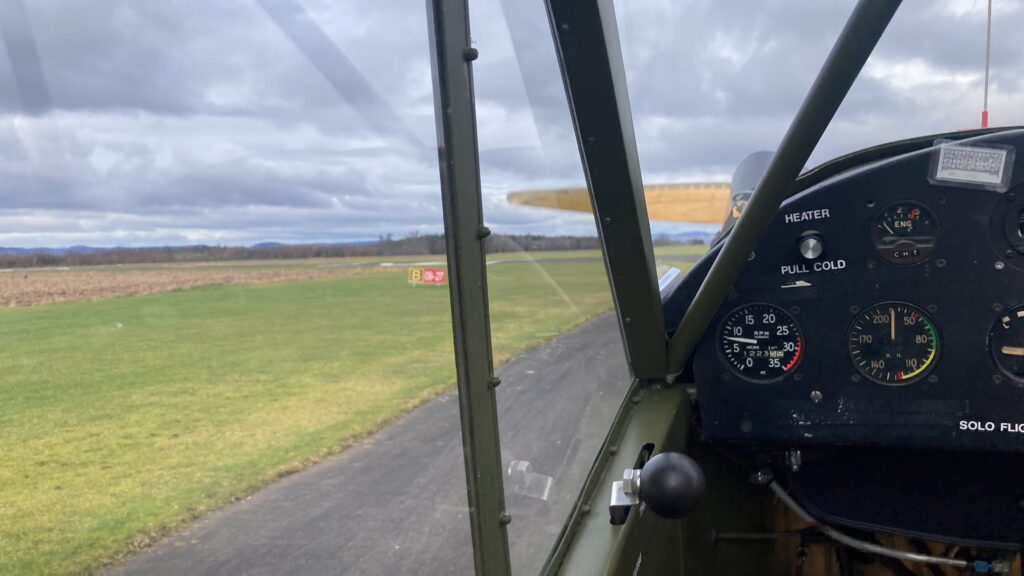
Departing from the downwind leg. Balado is only 14 nautical miles from Perth, so about 14 minutes at Cub speeds:
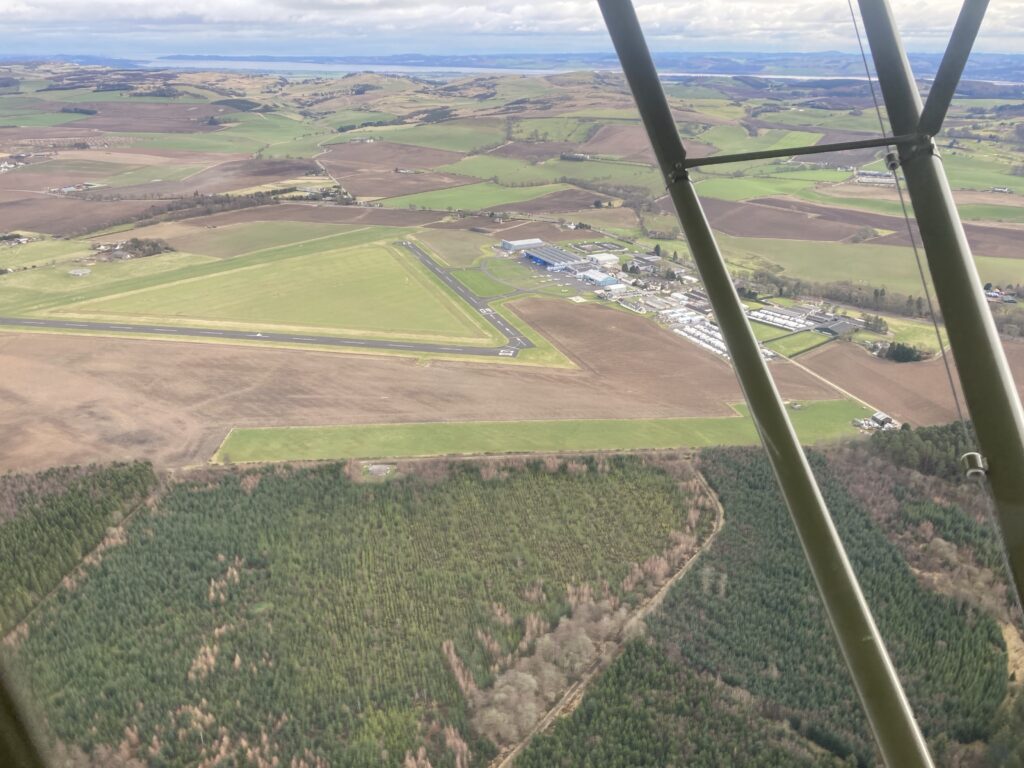
Passing Perth city centre:
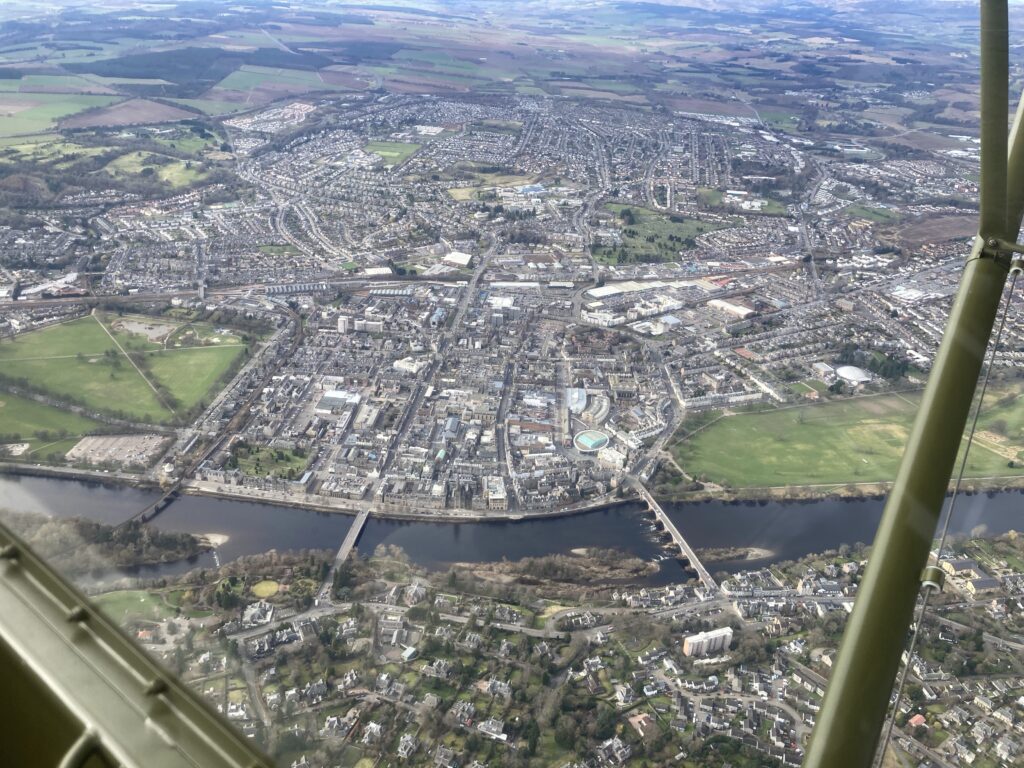
A view of Balado airfield from above, looking more or less south. Easily visible are the outlines of the two disused wartime concrete runways, now covered with chicken sheds. The airfield was known as RAF Balado Bridge, named after the little village visible at the top of the photo. It SHOULD have been called RAF Kinross, but this might have caused confusion with RAF Kinloss, on the Moray coast.
Just visible between the village and the east/west runway is the dome of the former NATO satellite communications groundstation, which closed in 2006. The new airfield is on the green patch closer to the camera, with an aircraft visible at the intersection of the grass runways:
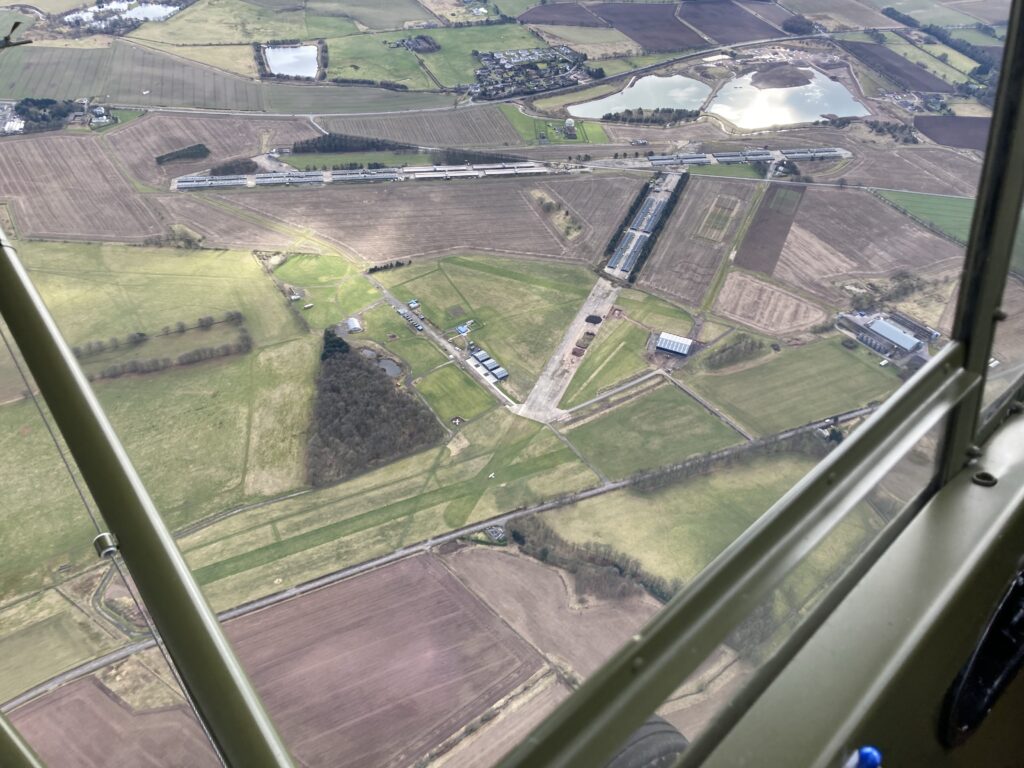
Nice new shiny clubhouse, with the offices of the microlight school, coffee machine and snack shop. All done by contactless payment, even the landing fees:
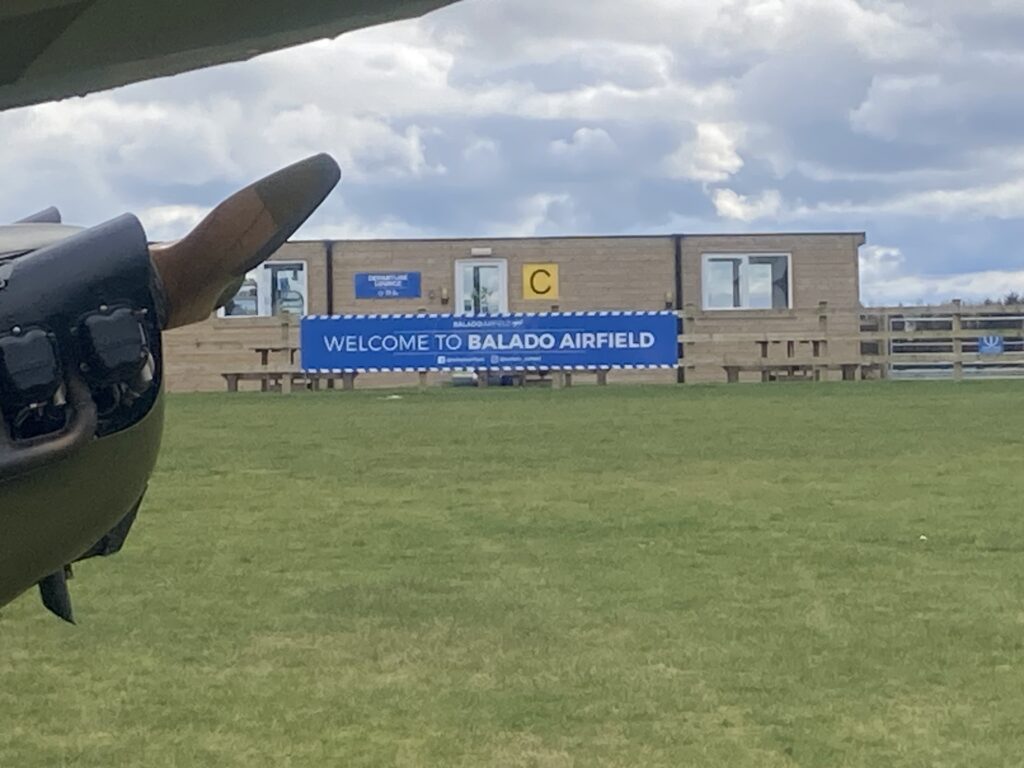
Three of the new hangars. On the overhead shot you can make out the big new hangar as well:
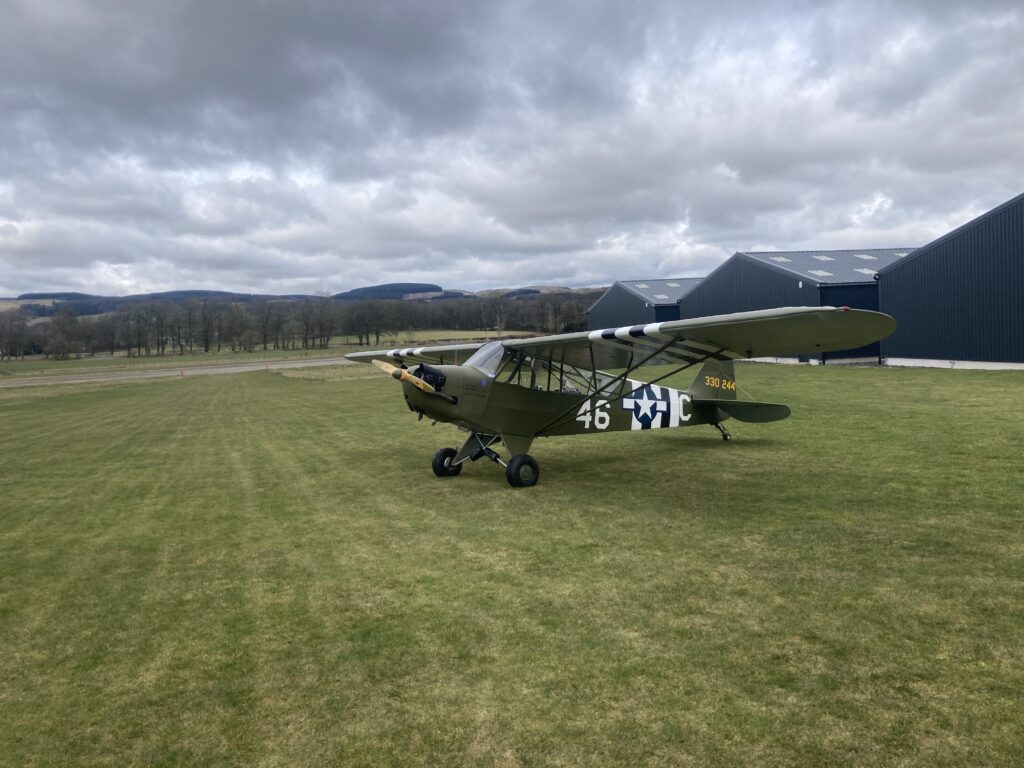
Perth based Cub and Skyranger Nynja (note the registration!) parked up by the clubhouse:
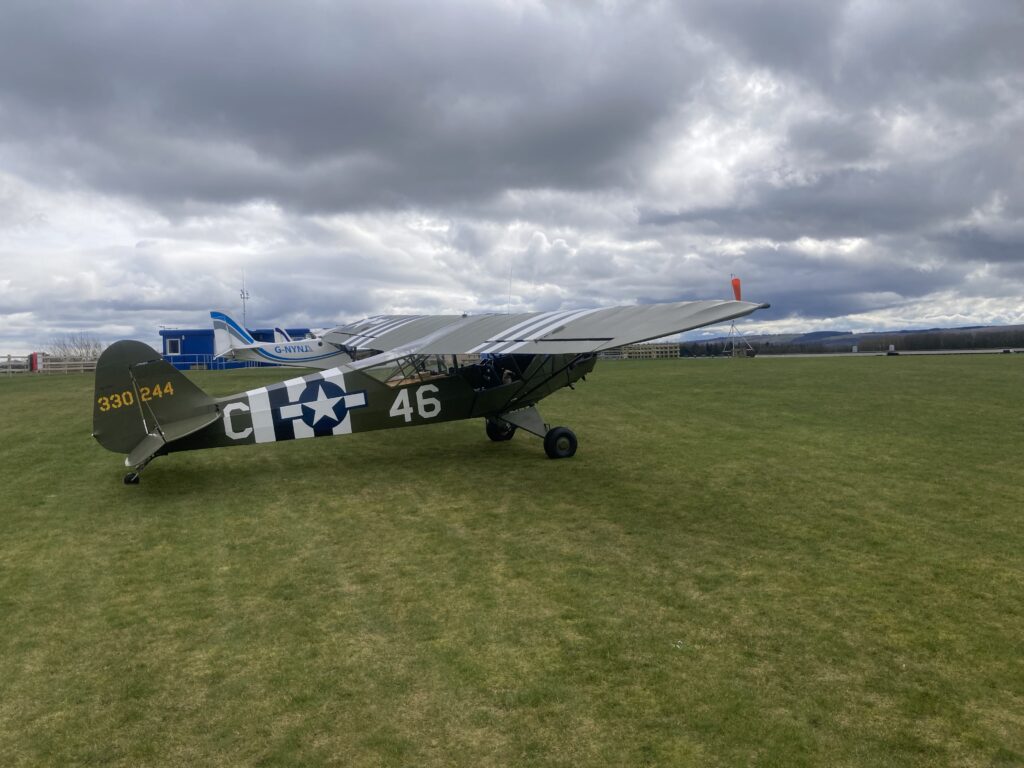
Bob and Susie starting up for more aerial adventures – taking the long way back to Perth via Stirling, Dunblane and Auchterarder:
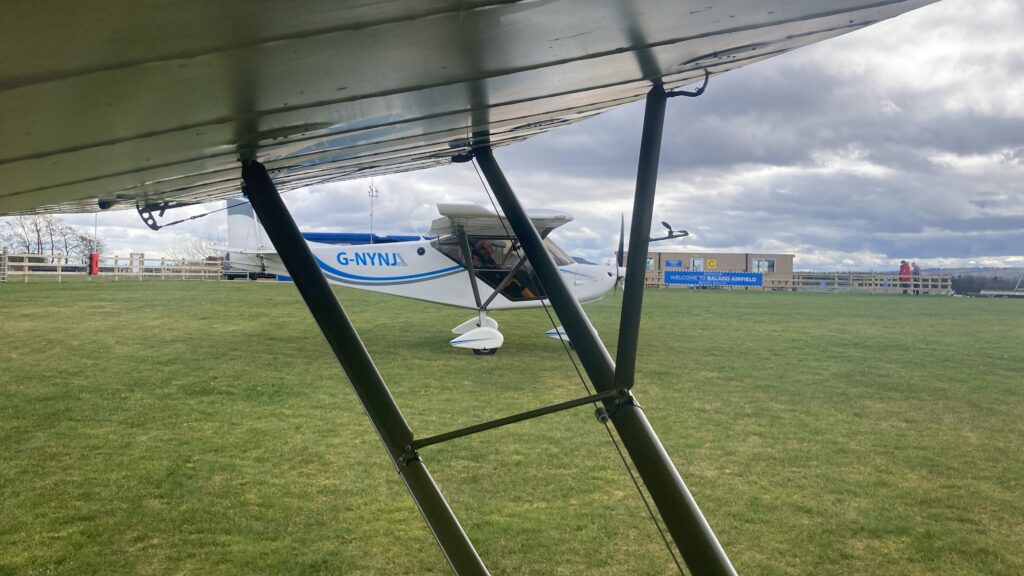
The wind direction had changed slightly, so I followed the Ninja to a different runway than the one I had landed on. I was effectively using them as pathfinders to lead me around the slightly unfamiliar airfield.
On landing back at Perth , instructor Jeremy ran over excitedly and said “I’ve got you a present, don’t go anywhere!” – he returned five minutes later with this… A Commando comic with a Piper Cub on the cover. Firing rockets..!
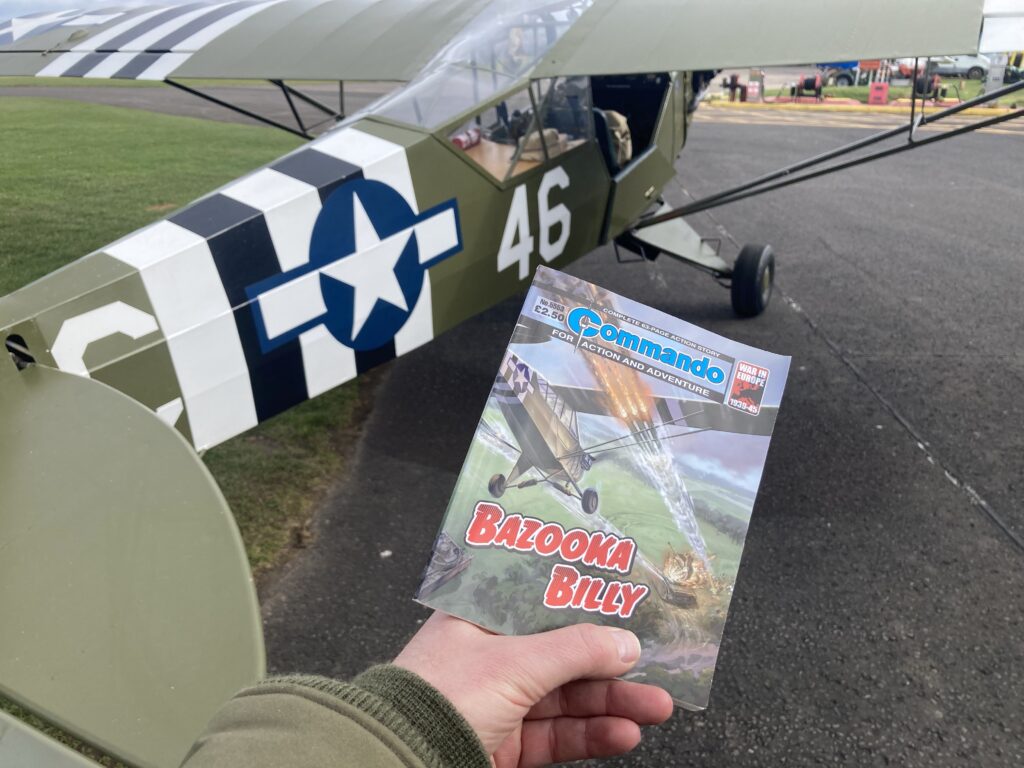
This really did happen in WW2, enterprising liaison pilots strapping weapons to their unarmed aircraft. The most famous was Major Charlie Carpenter, who came to be known as “Bazooka Charlie” and was officially credited with fourteen enemy tanks destroyed. If you have a quick five minutes, here’s the story:
